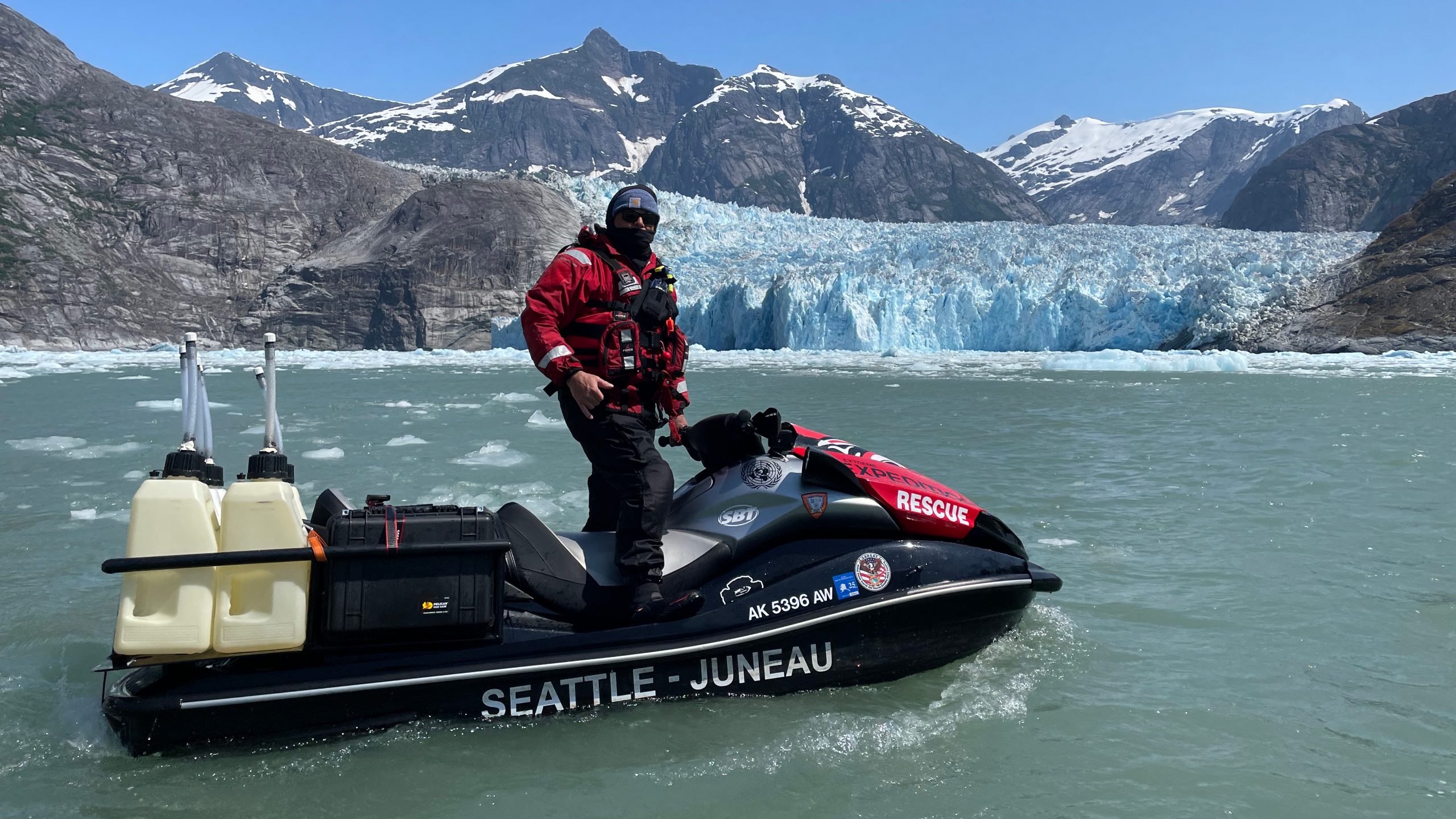It might be one of the coldest places on the planet, but it is possible to go Jet Ski riding in Alaska.
The team behind the Dangerous Waters TV show on the National Geographic channel – and, later, on various streaming platforms – has come up with a Jet Ski tour for holidaymakers with a sense of adventure.
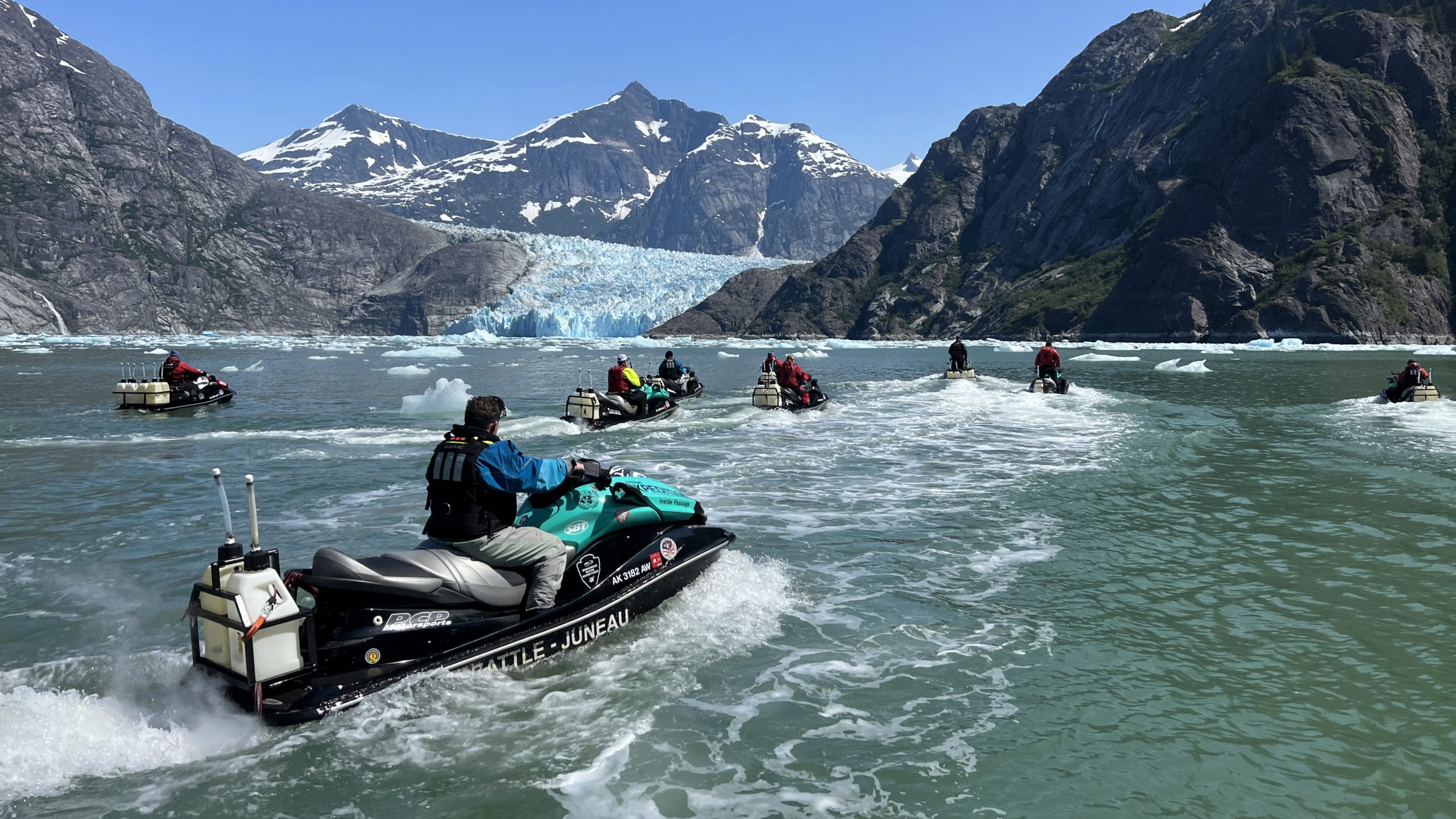
Each summer season between June and October, Dangerous Water Adventures runs week-long Jet Ski tours from Seattle in Washington State to Juneau, Alaska.
The journey is spilt into 18 week-long tours up and down the coast and into parts of Alaska not accessible by cruise ship.
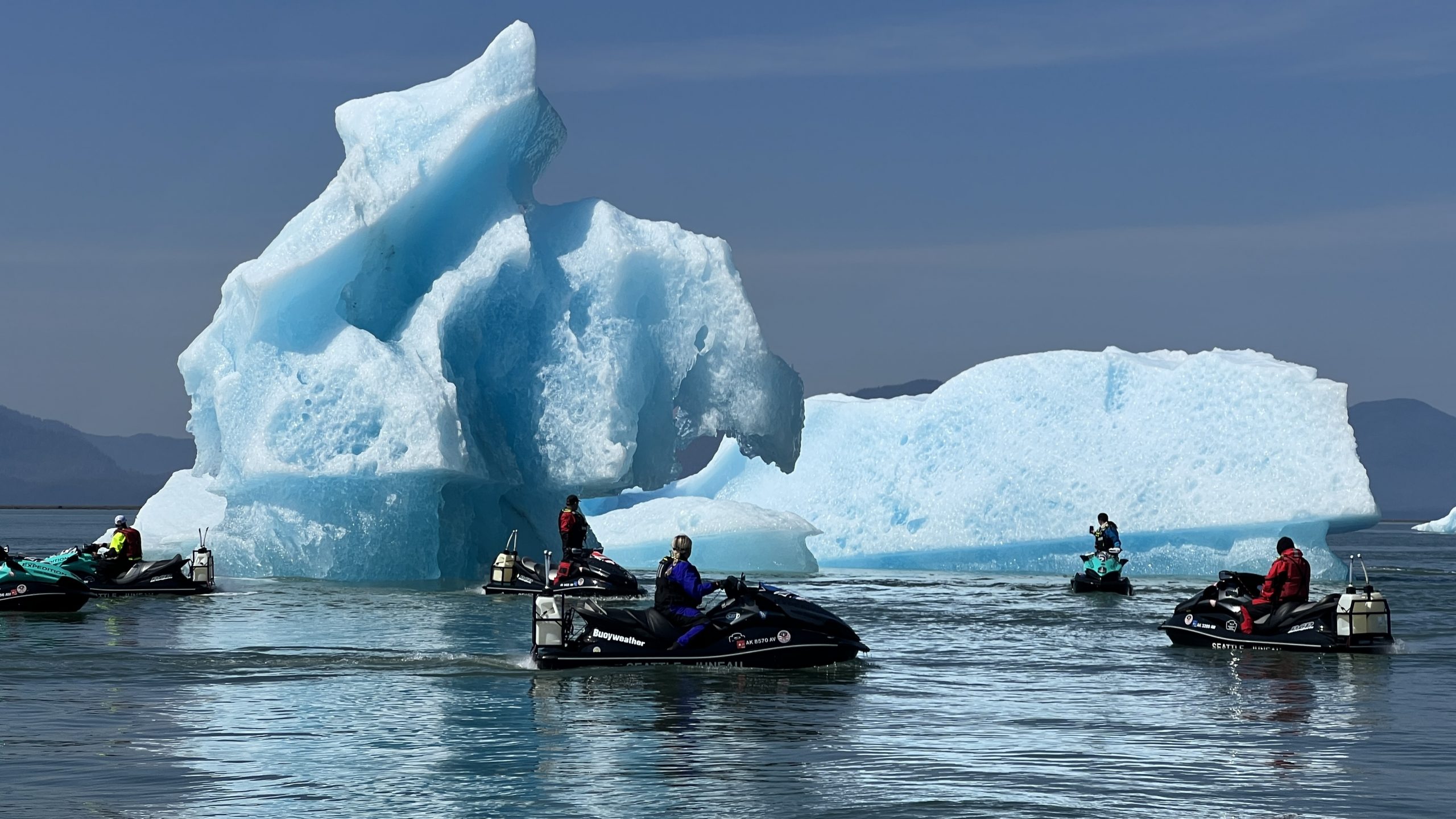
For each leg of the journey, a group of up to a dozen Jet Ski riders are led by two expert guides.
Most tours attract couples and families from North America and around the world.
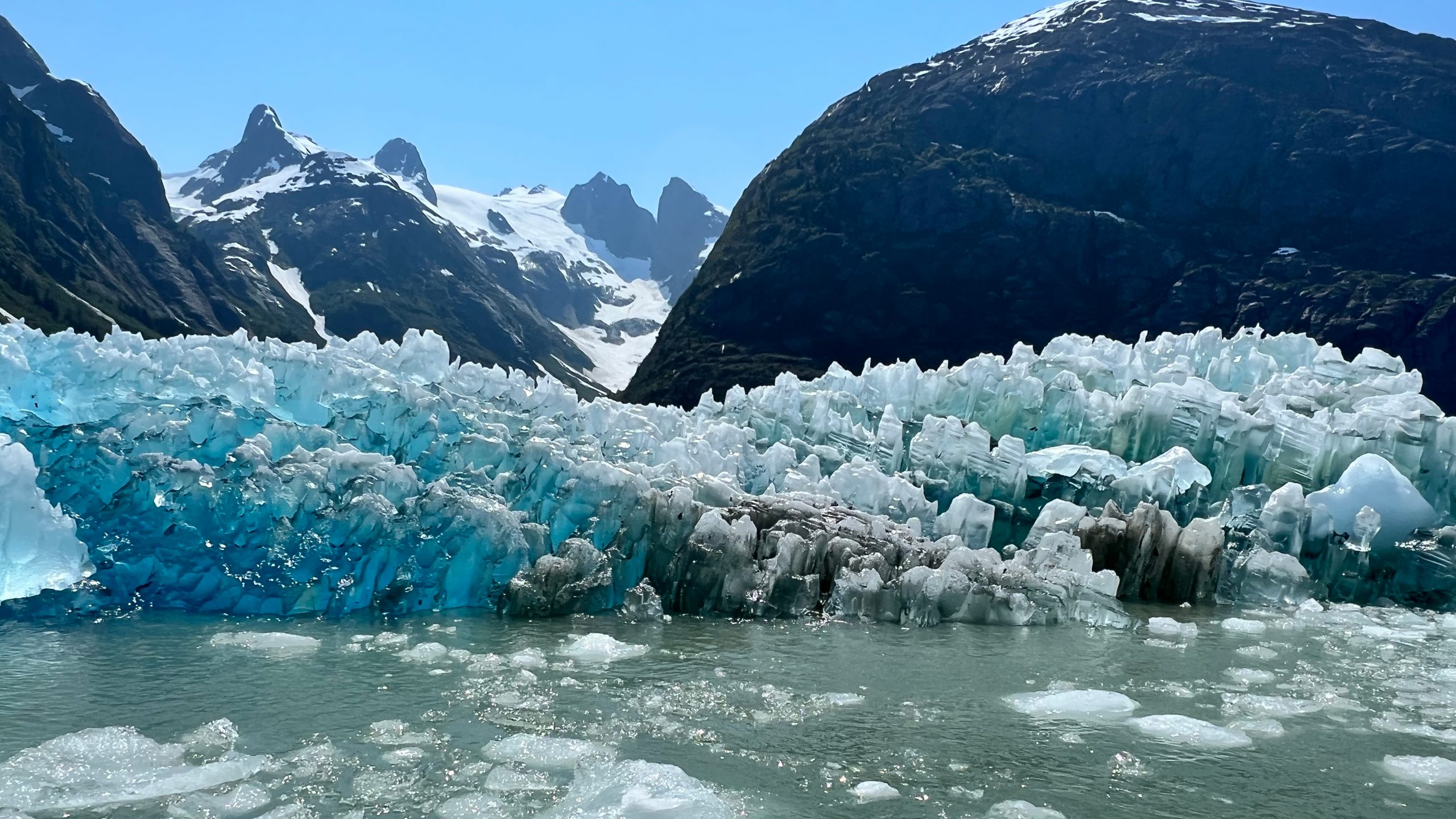
On this occasion two tour guides led a large group of 14 ocean riders from Australia on an extended version of the Alaskan Loop.
Watercraft Zone participated in a seven-day, 800km Dangerous Water Adventures Jet Ski tour as a paying guest. This coverage is not part of a promotion and is not sponsored content, so we can be honest about the pros and cons of our experience.
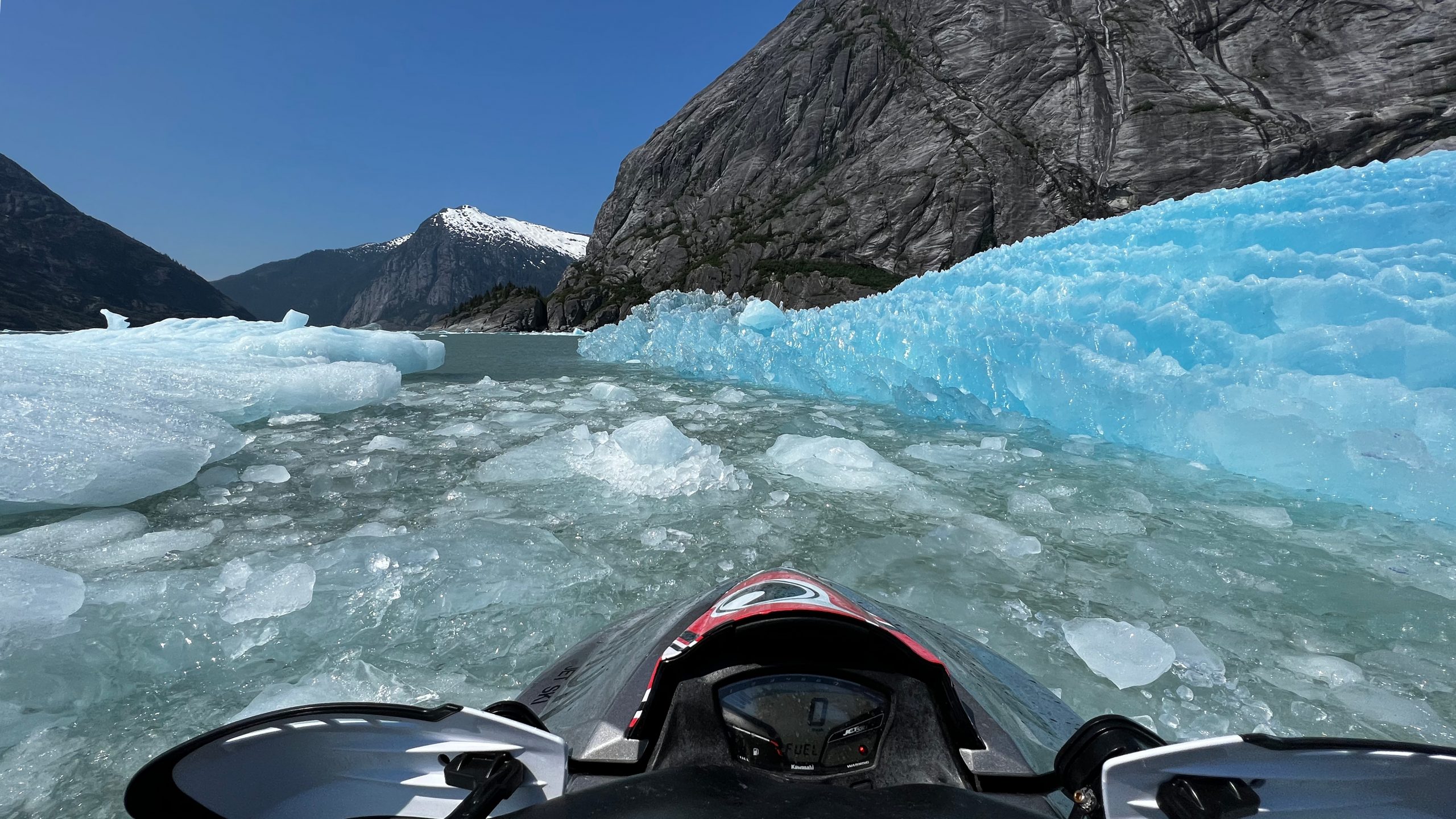
There is behind the scenes coverage at the bottom of this story.
Alaska has a lot to offer in terms of wildlife – such as eagles, bears, seals and whales, and the occasional deer fleeing a bear – as well as dozens of islands and spectacular mountain scenery.
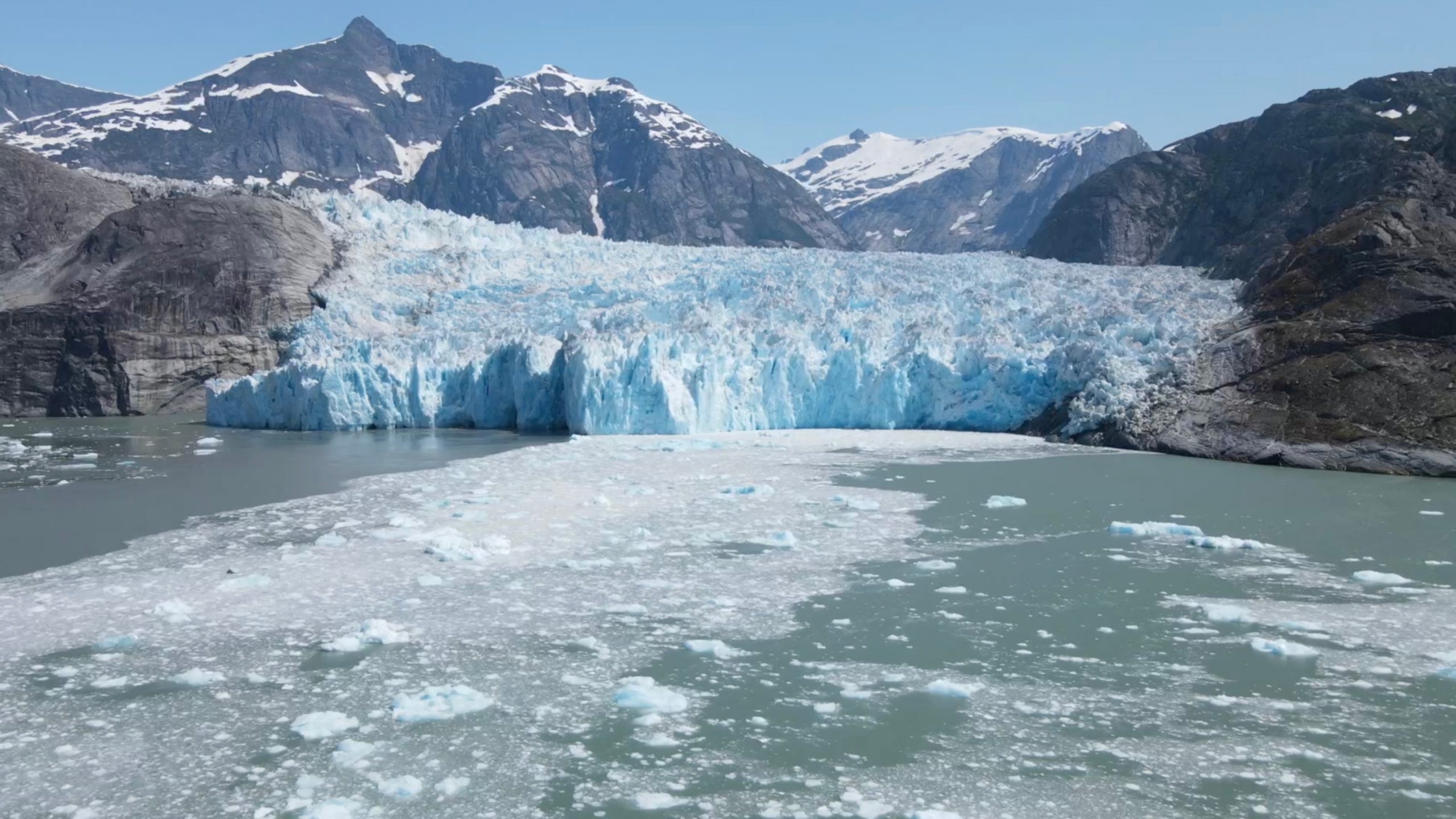
The highlight for the trip, however, was Jet Skiing up close to ice bergs, which are still present even in the middle of the Alaskan summer.
Although the temperatures at this time of year are generally mild – ranging from 15 to 20 degree Celsius or 60 to 70 degrees Fahrenheit – there are still plenty of ice bergs, although their shape has been carved by the wind and melted by the warmer weather.
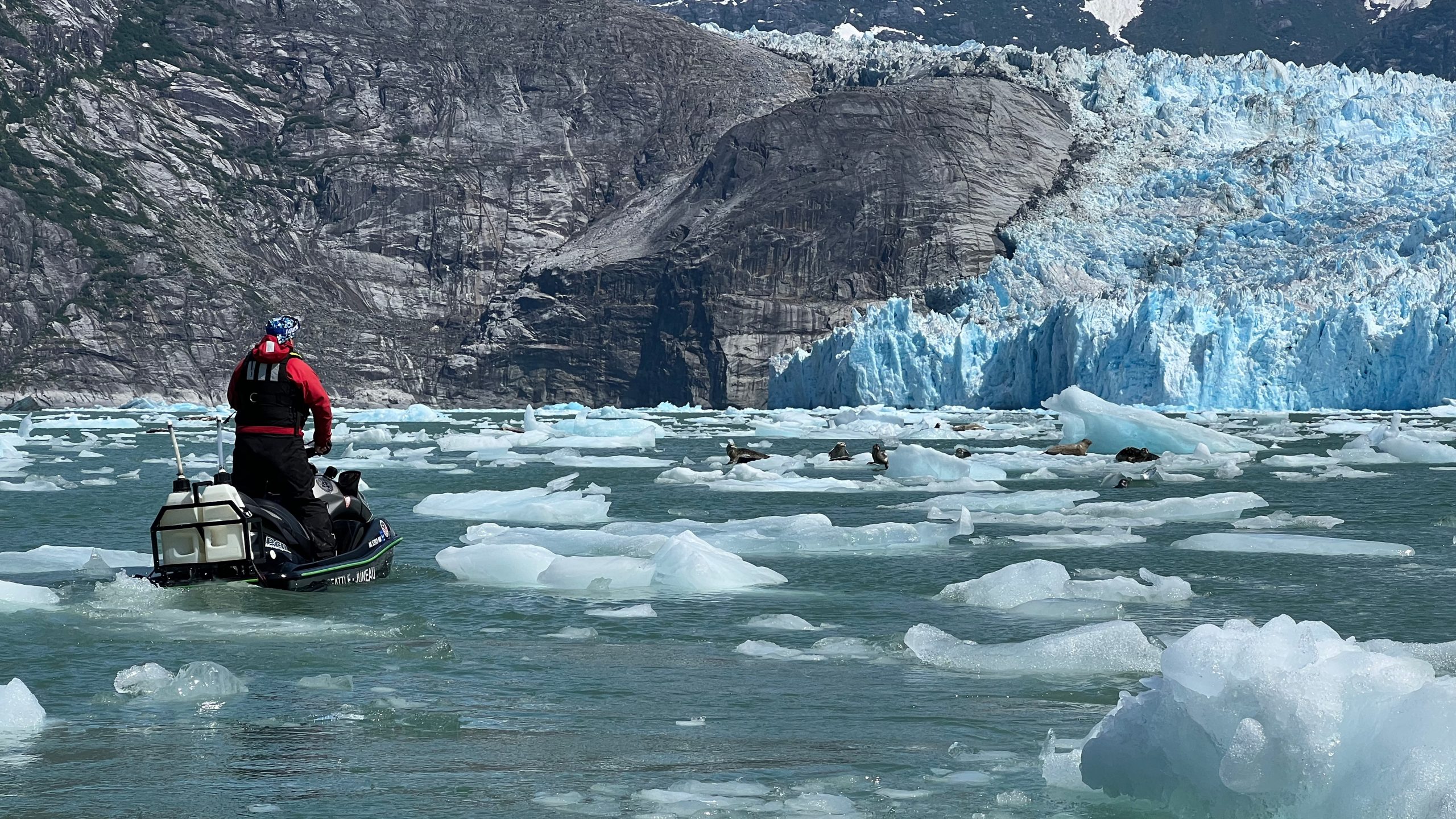
As larger ice bergs begin to break away over the summer, riding a Jet Ski in close proximity requires caution – and patience.
Each Jet Ski is effectively travelling at engine idle speed, or walking pace.
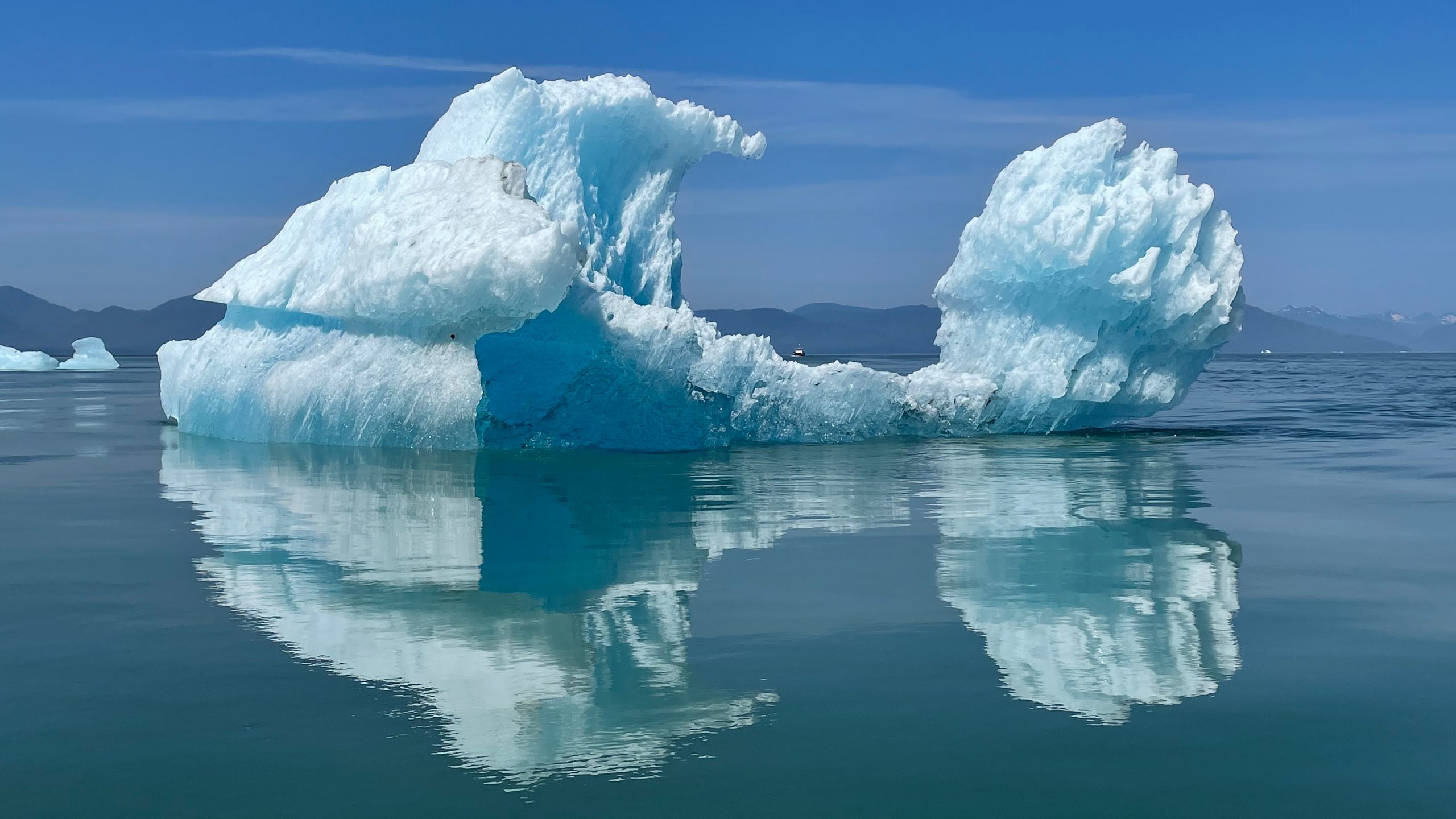
Riders must also stay alert and navigate their way through the maze of ice without damaging the fibreglass hull on the ski.
Hitting an iceberg could crack the hull and cause the craft to sink.
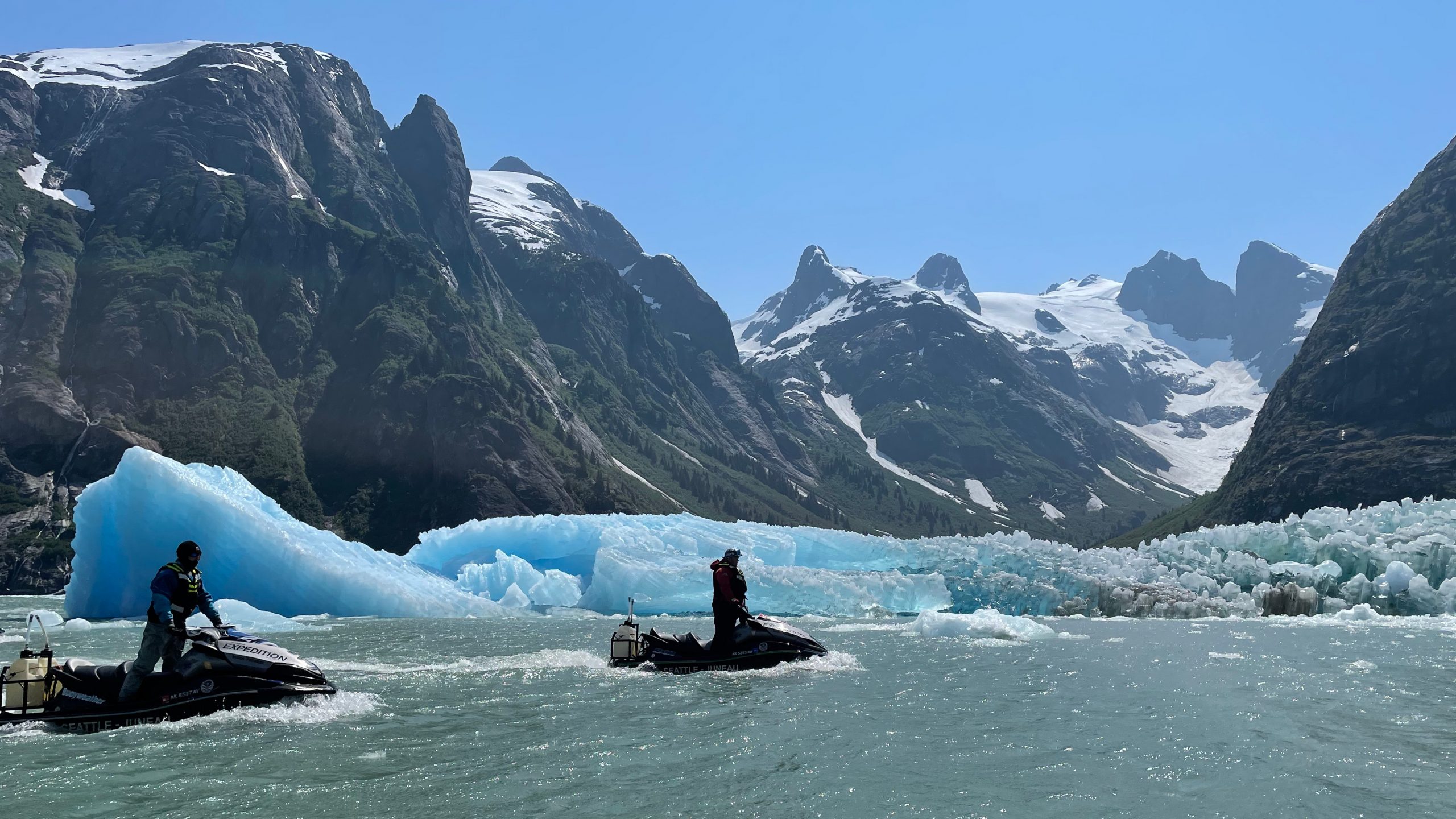
With water temperatures close to freezing, there’s plenty of incentive to take it easy and stay afloat.
Besides, with such magical scenery, why rush? Going slow gives you more time to take it all in.
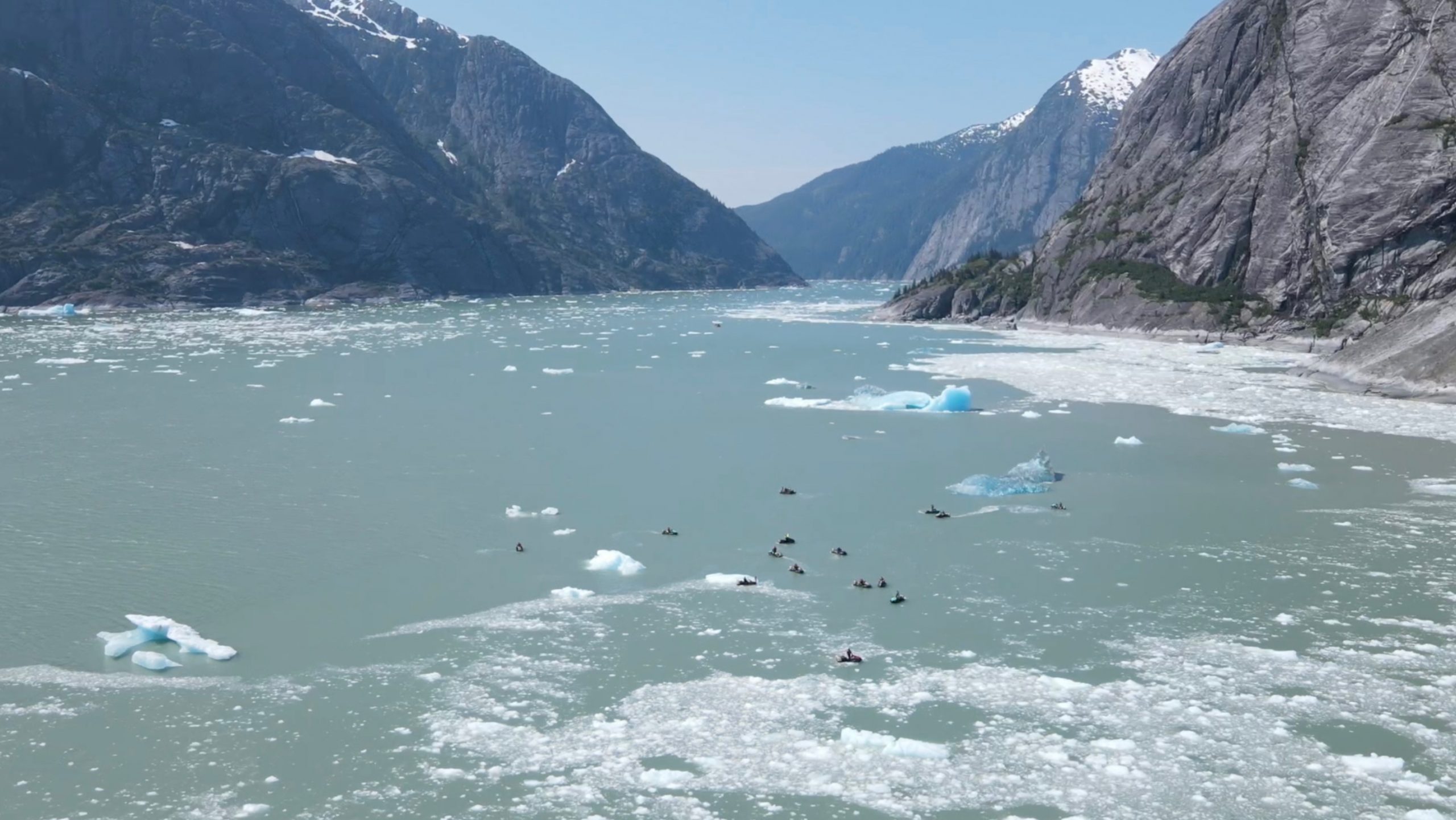
The LeConte Glacier is a dead-end in a channel not far from the tiny town of Petersburg Alaska, which has a population of about 3000 people.
According to Wikipedia, being south of the 57th parallel north, LeConte Glacier is the southernmost tidewater glacier in the Northern Hemisphere.
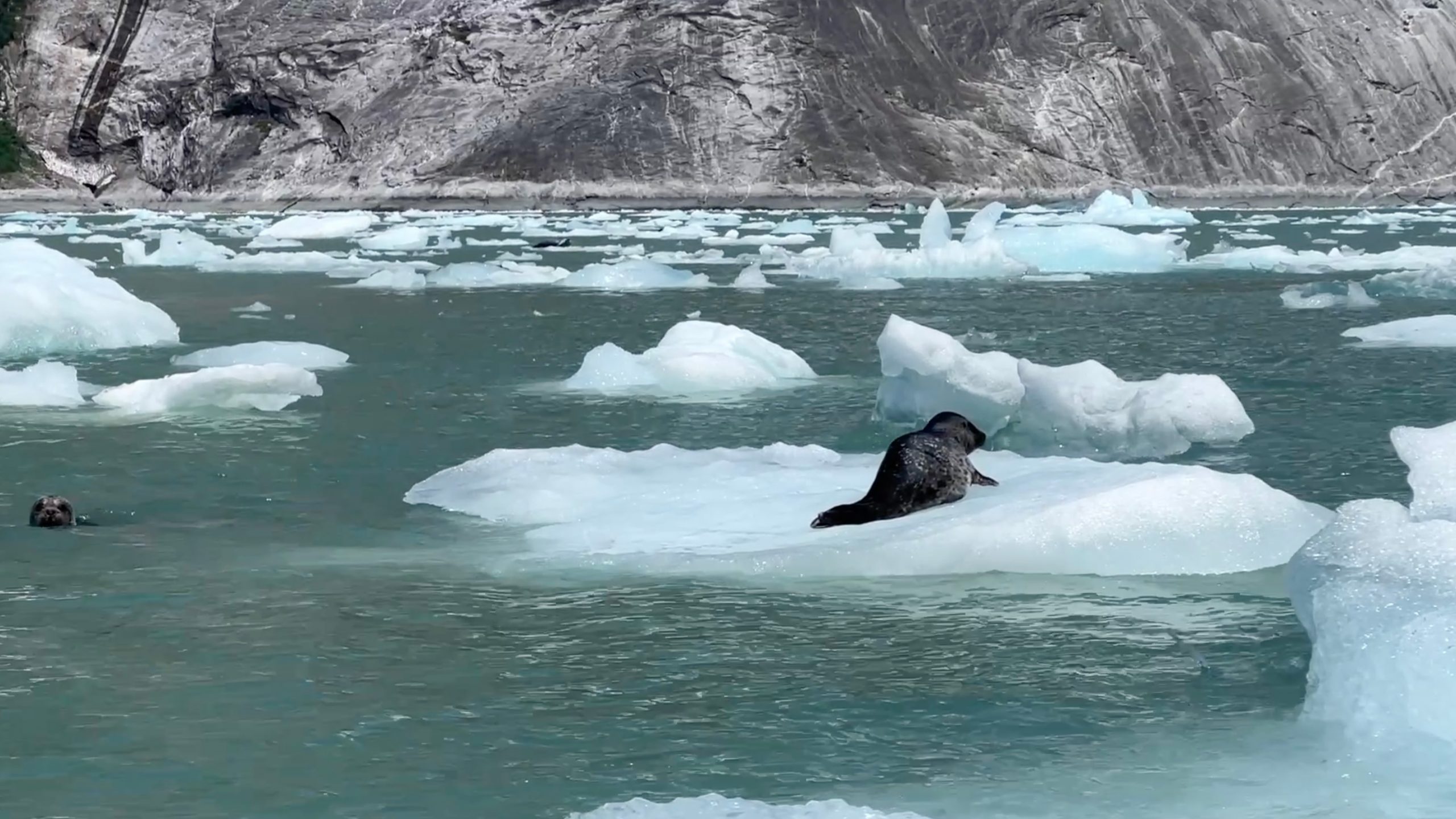
Even though the water is calm, there was a gentle swell coming from the ice melt and the tidal change.
With so many small icebergs, there is no clear path to reach the face of the glacier, so riders must choose their course carefully.
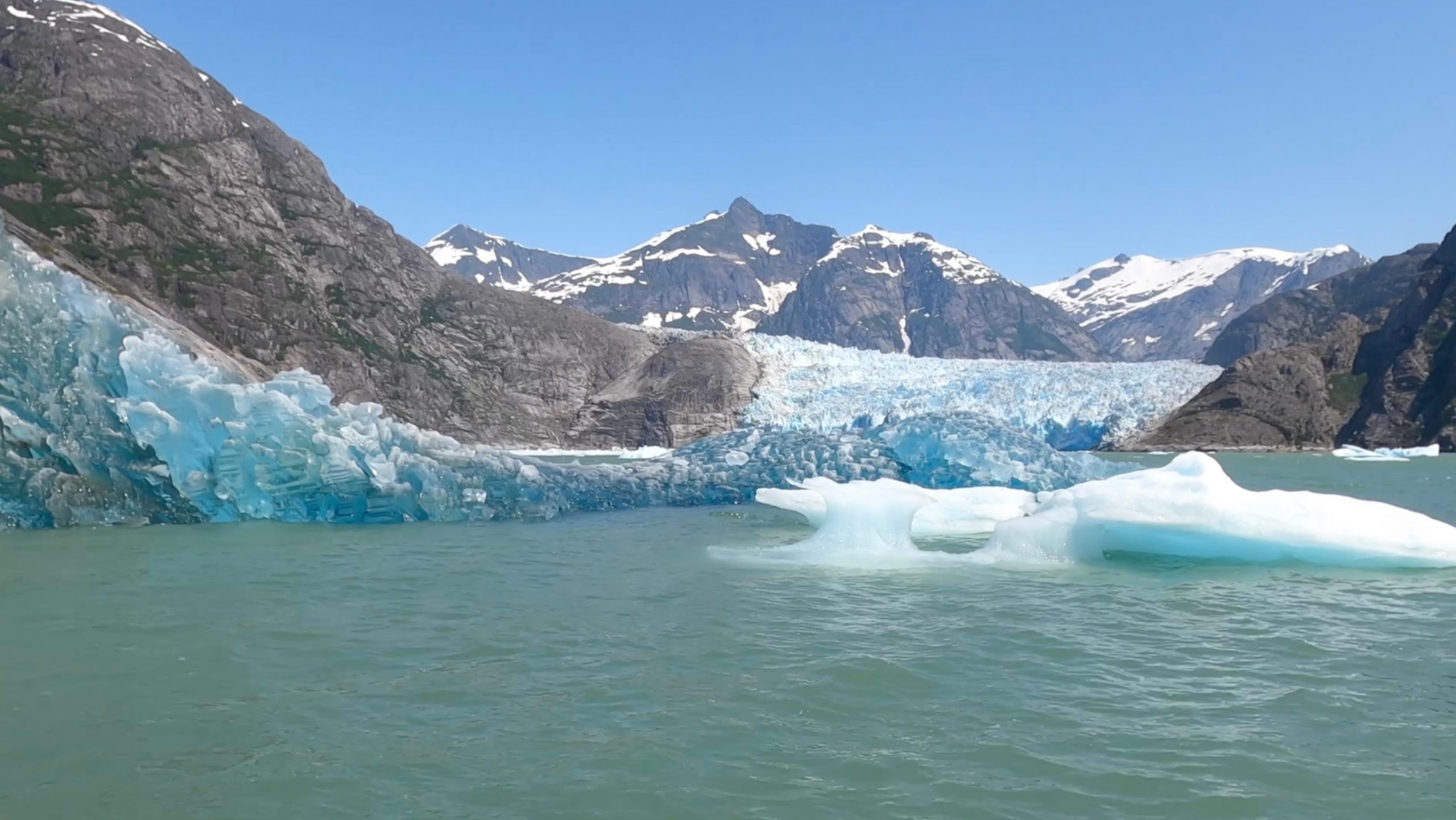
These waters are inaccessible by boat for most of the year.
After getting up close to the ice – and taking a sample back to cool the drinks at the bar that night – it was time to return to our base in Petersburg for the evening.
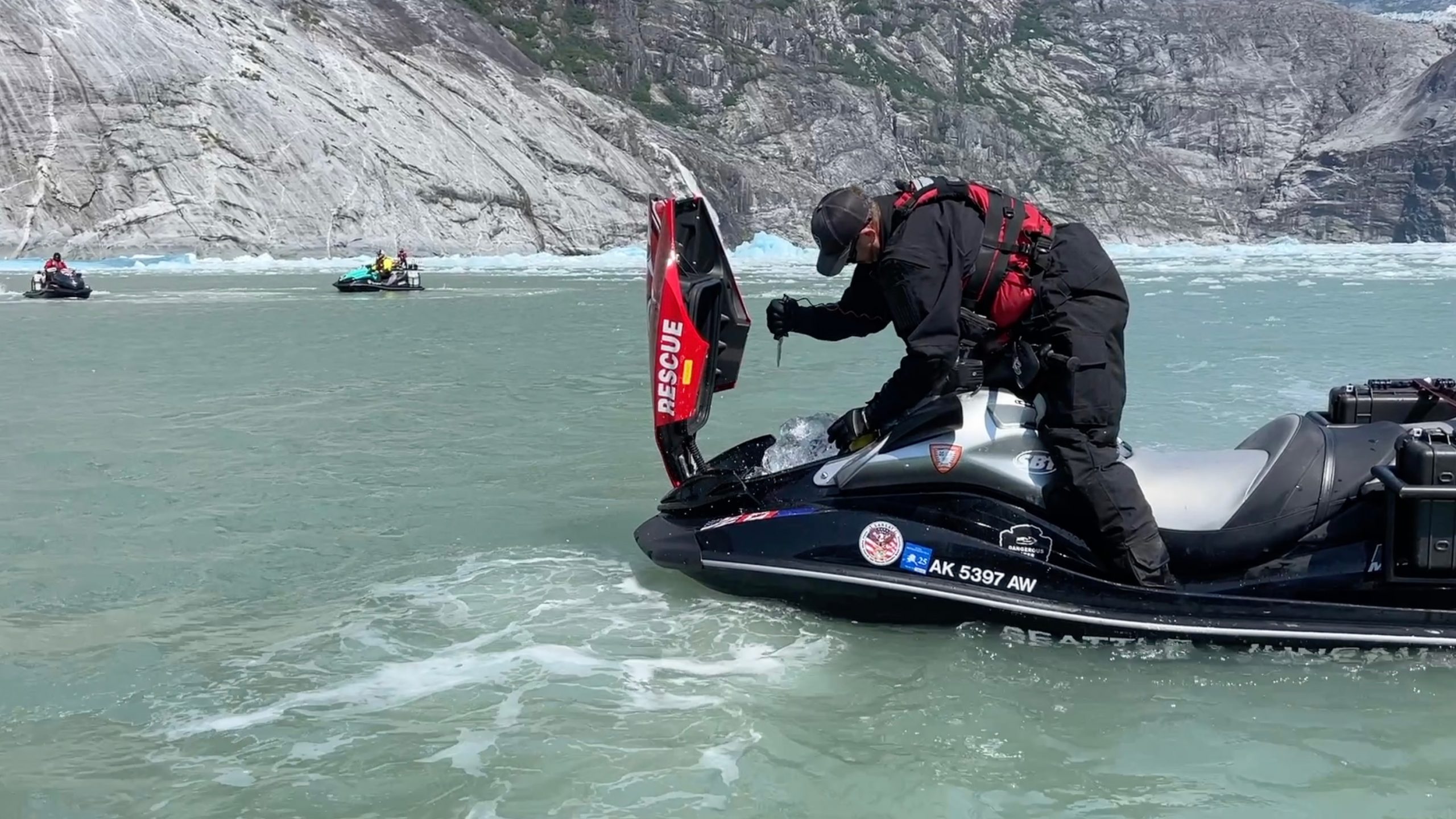
The tours are led by two experienced guides who are rescue trained. One rides up front and the other is the sweep, who keeps an eye on the entire group.
Most tour groups comprise inexperienced or first-time Jet Ski riders. No licence or experience is required.
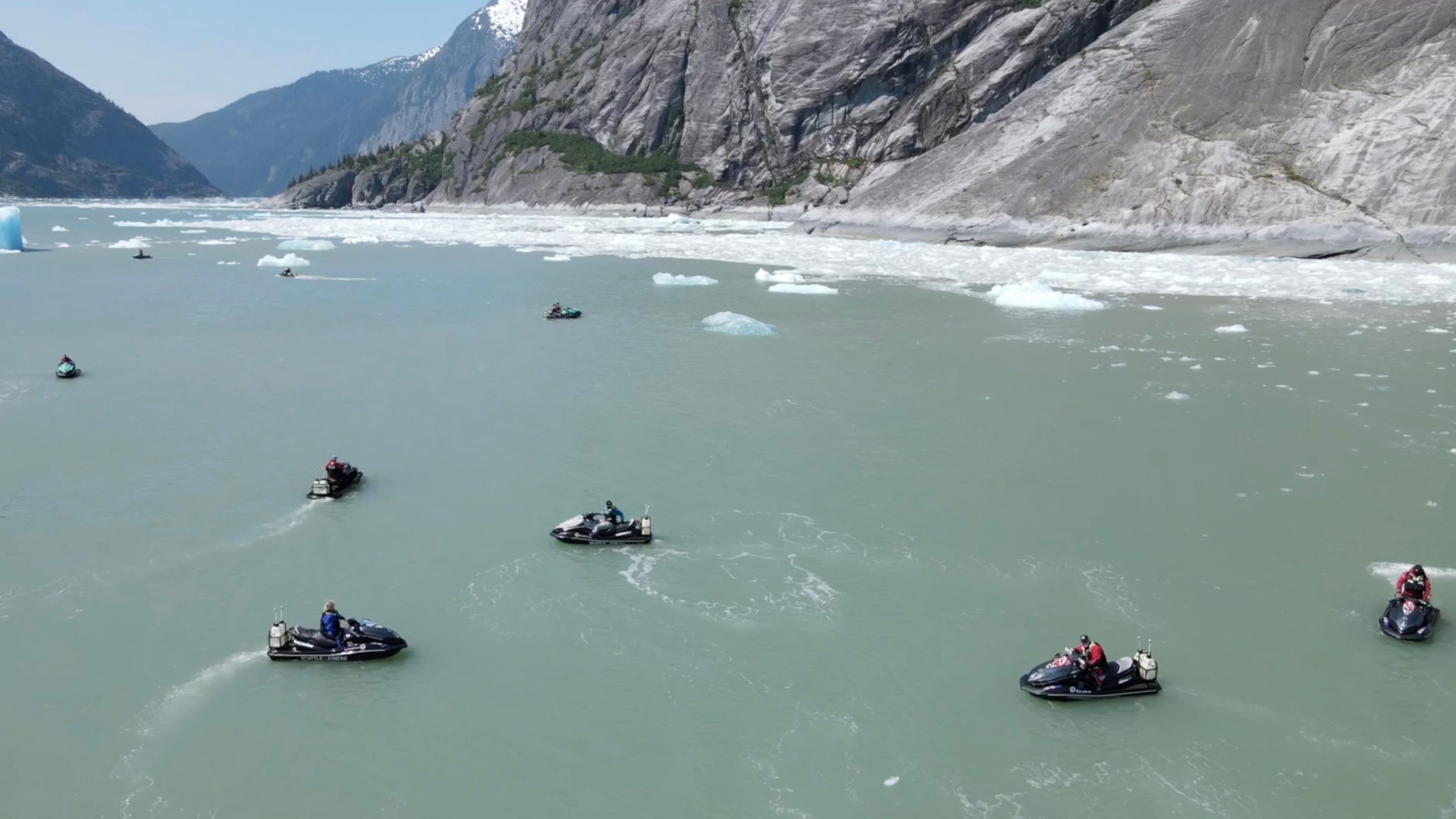
The group usually moves at a leisurely pace to take in the scenery, and to make sure no-one is left behind.
The entire group is only as fast as the slowest rider.
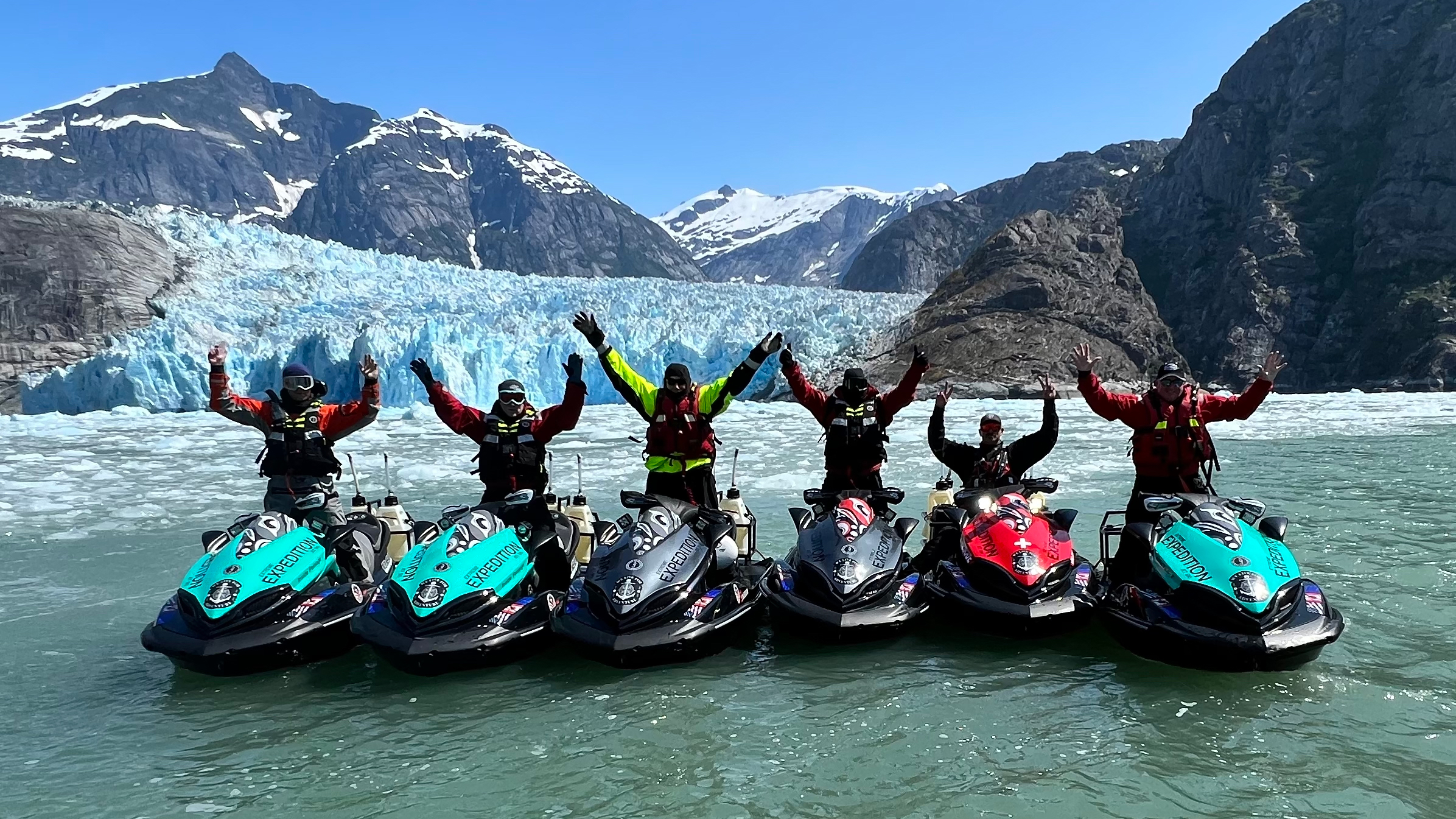
This particular group comprised 14 experienced ocean riders from Australia who all knew each other, and who were used to riding together in close proximity.
The riders’ experience – and the smooth water conditions, which at times was like glass – meant the group was able to cover more distance in less time, and stop for longer at scenic locations.
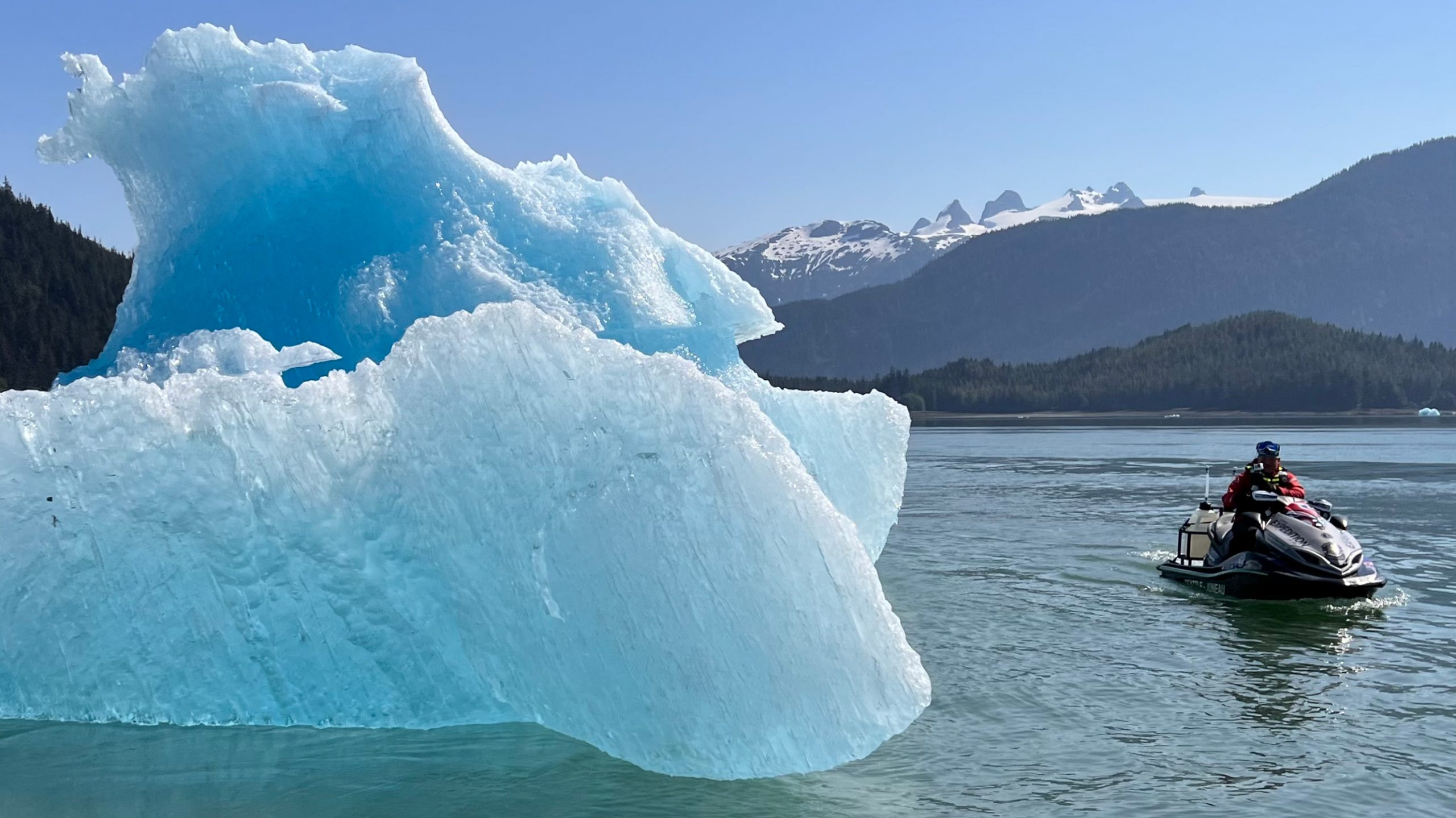
Some channels were so narrow or shallow it was necessary to ride in single file at a safe distance from the Jet Ski in front.
Most of the time the group spread out at a safe distance side-by-side.
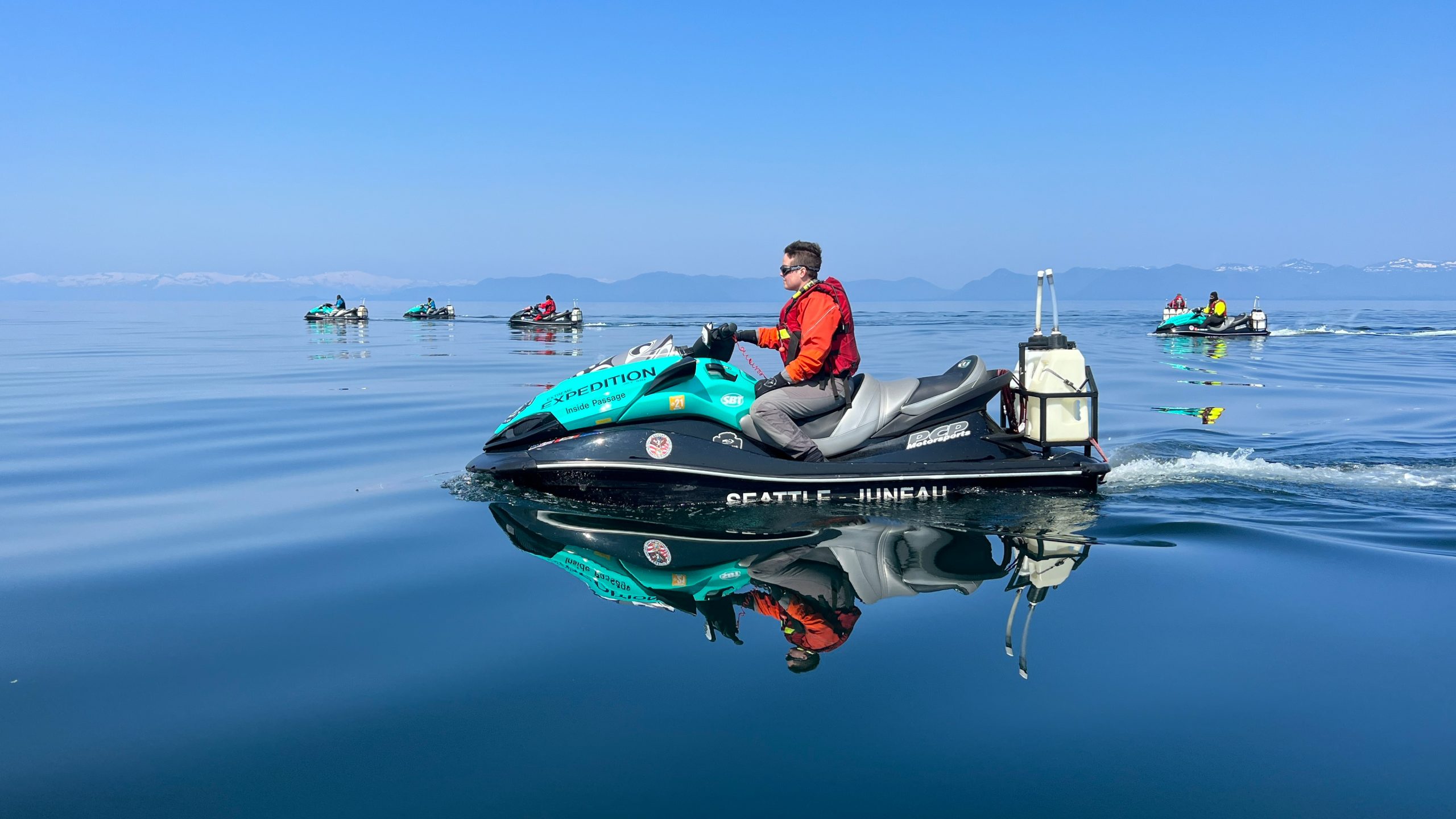
As these images show, our group encountered some of the best riding conditions any of us had ever experienced.
The weather for our 2022 journey was perfect most days, with clear blue skies, low wind, and calm water conditions.
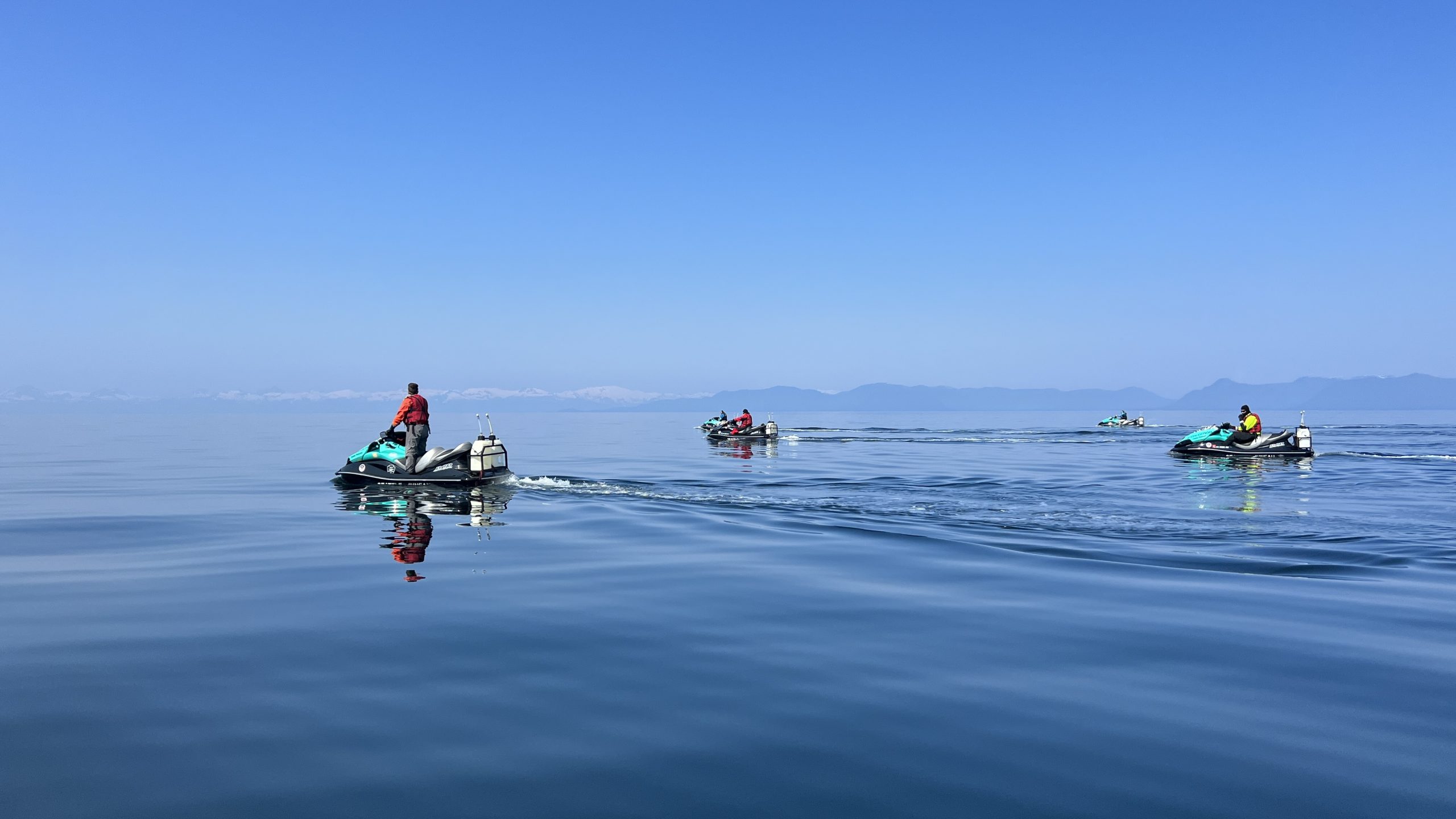
No matter where in the world you’re riding a Jet Ski, conditions like this are rare.
We were lucky. Organisers say there is normally at least a day or two of rain during the week – as well as a cancelled day due to severe weather.
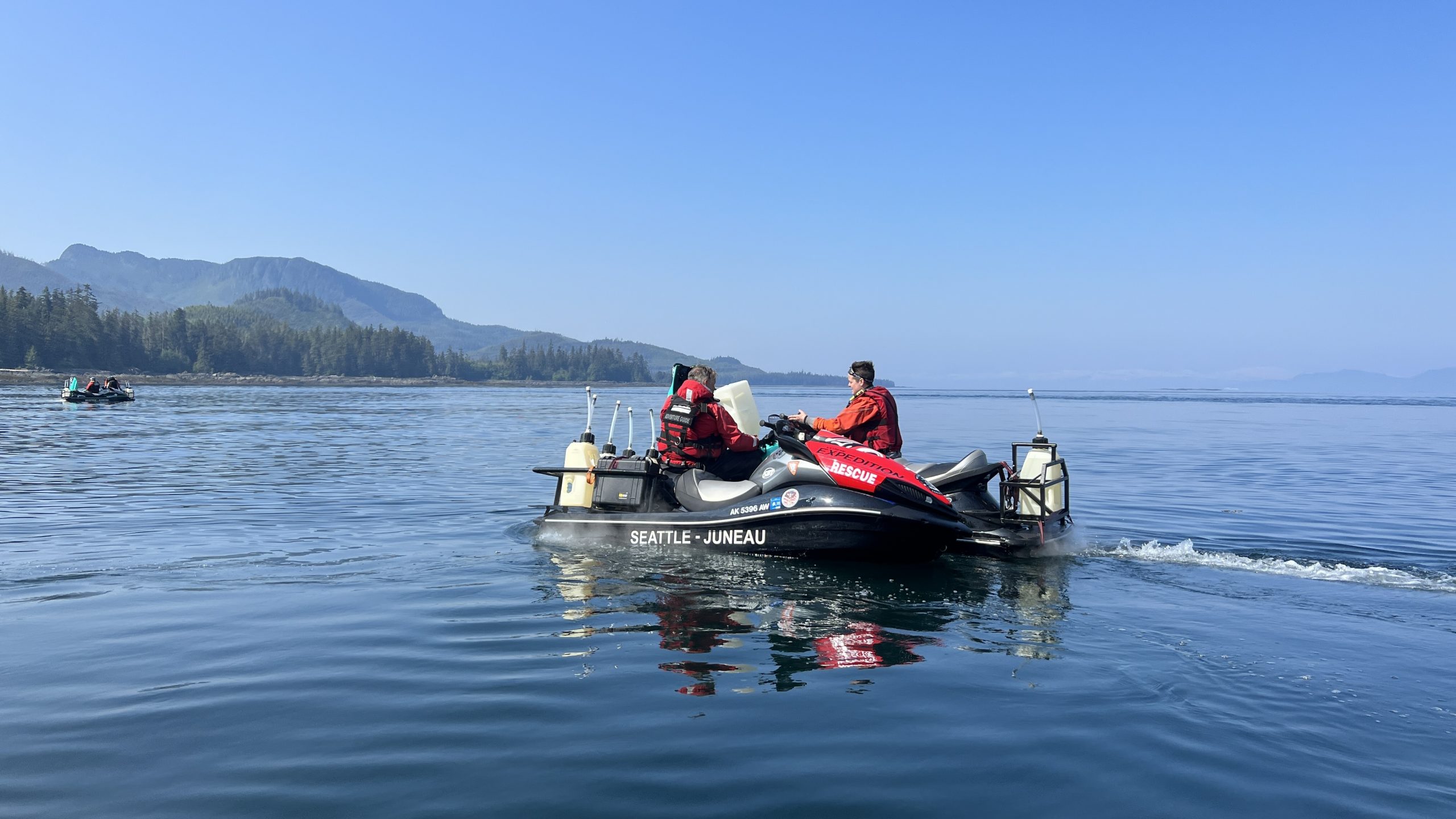
Travelling at higher speeds than usual meant the group went through more fuel than usual.
Refuelling is mostly done on the water using extra fuel carried securely on the back of the ski.
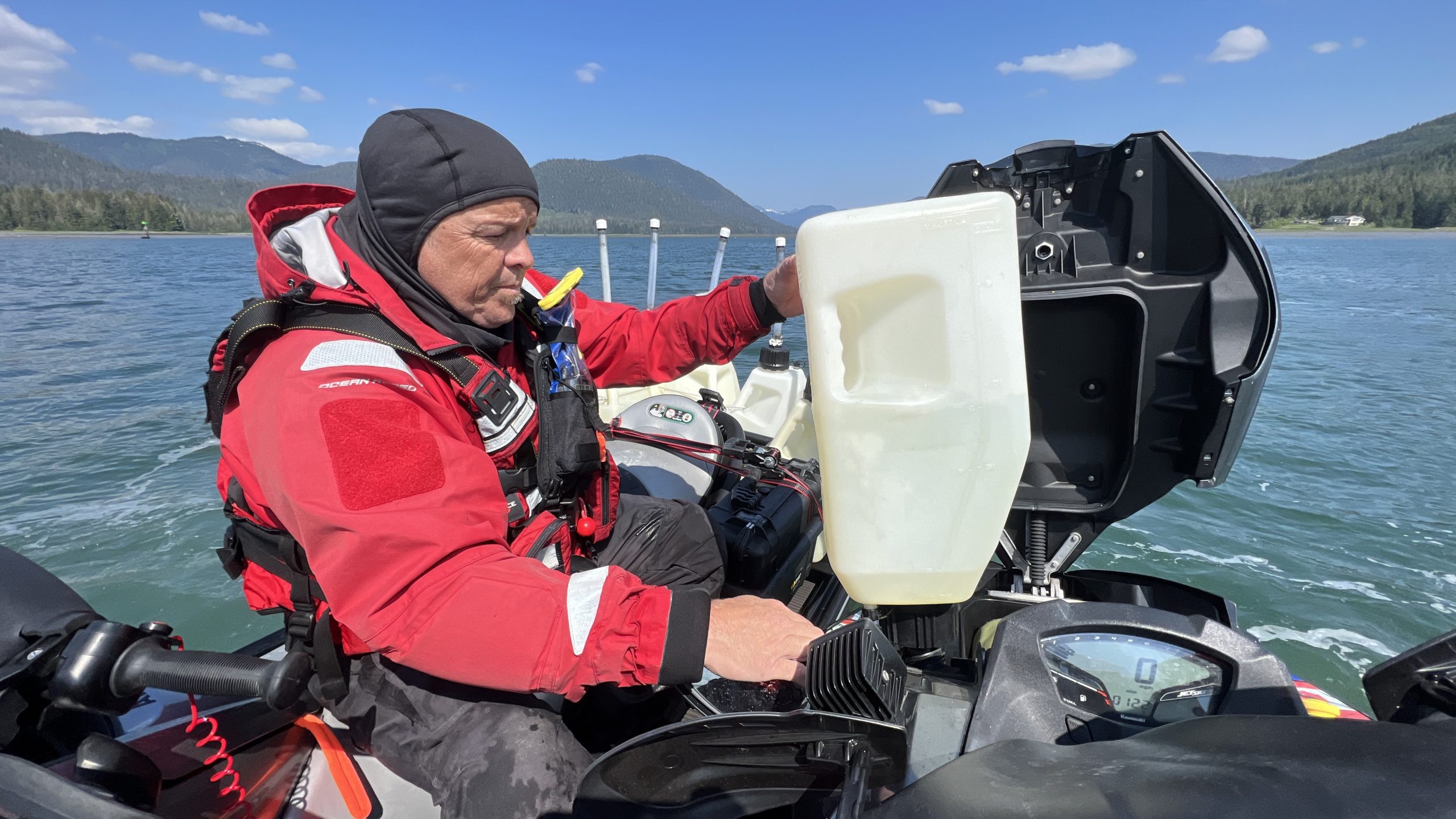
The guides refuel for the guests, to make sure there is no spillage in these pristine waters.
Many of the docks visited at the end of each day also have fuel. Though some fuel facilities are more modern than others.
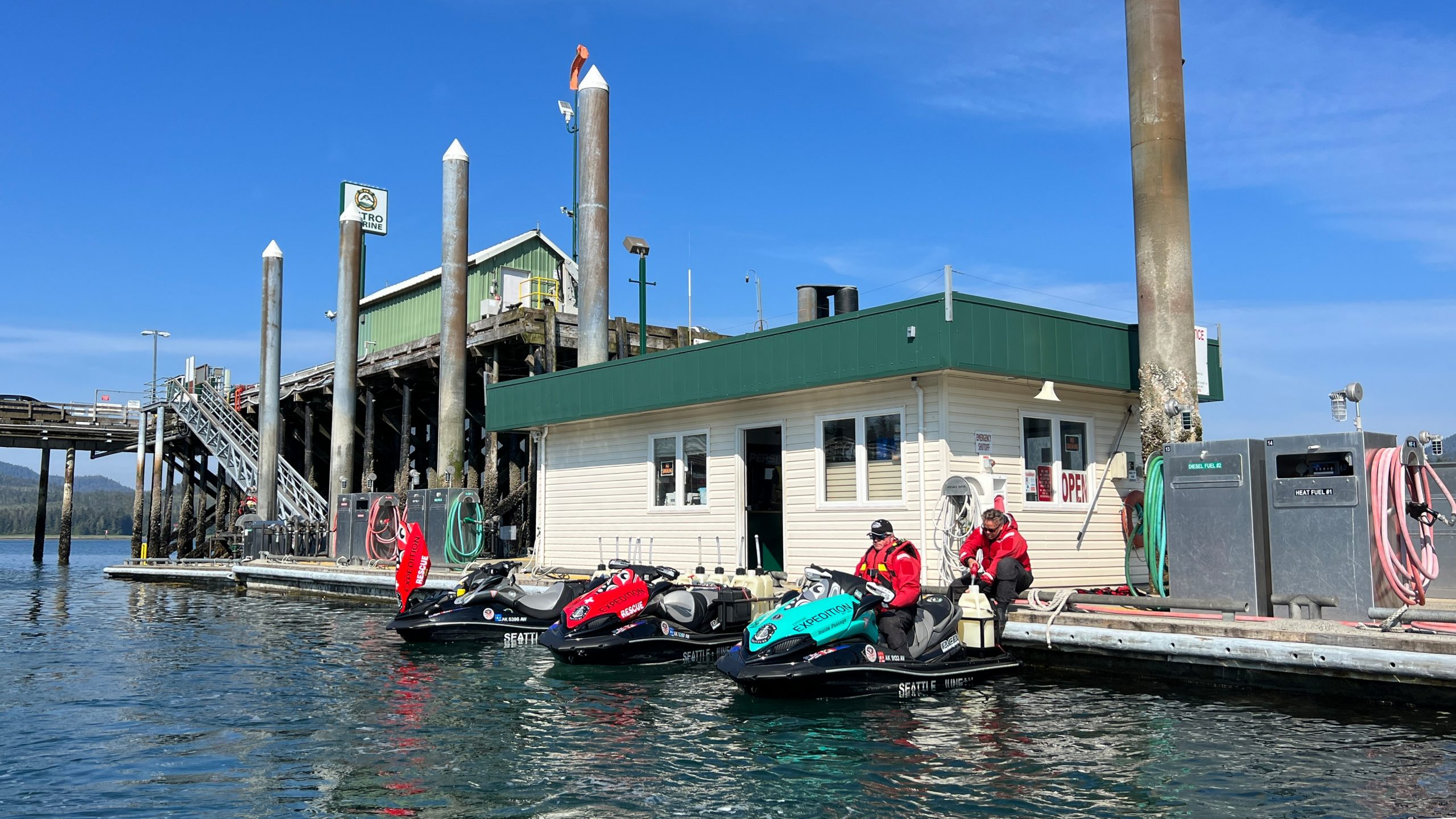
In Kake, the local bowsers had stopped working, so the gas station owners had their old Dodge pick-up truck bring some fuel down to the dock for us.
The pick-up had to park on a level dock – rather than the incline of the more convenient boat ramp – because it had no brakes.
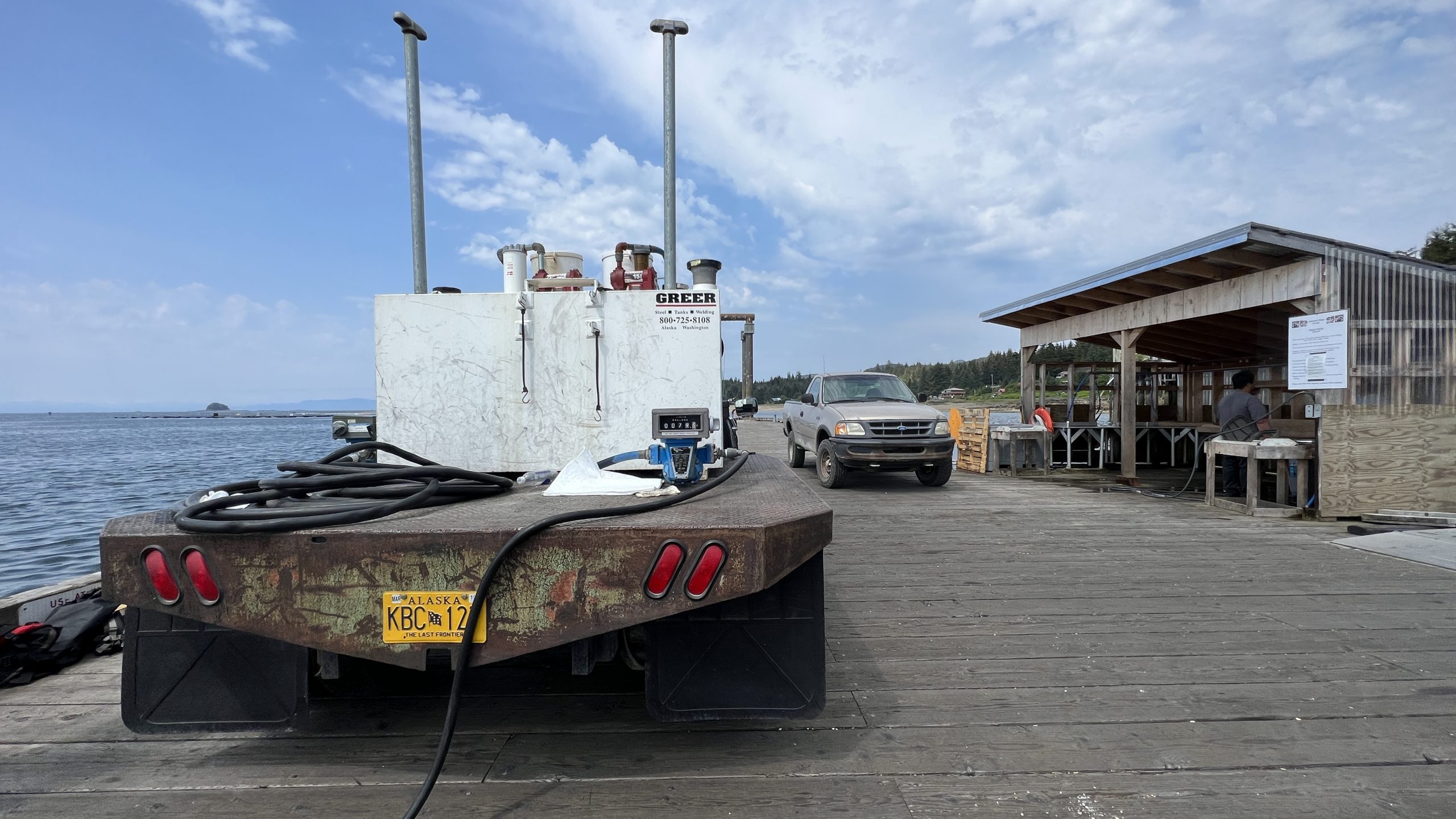
On our trip, which ran from late June through to the first week of July, we got to take part in July 4 celebrations.
Because we were so far north, daylight lasted all but for a few hours either side of midnight.
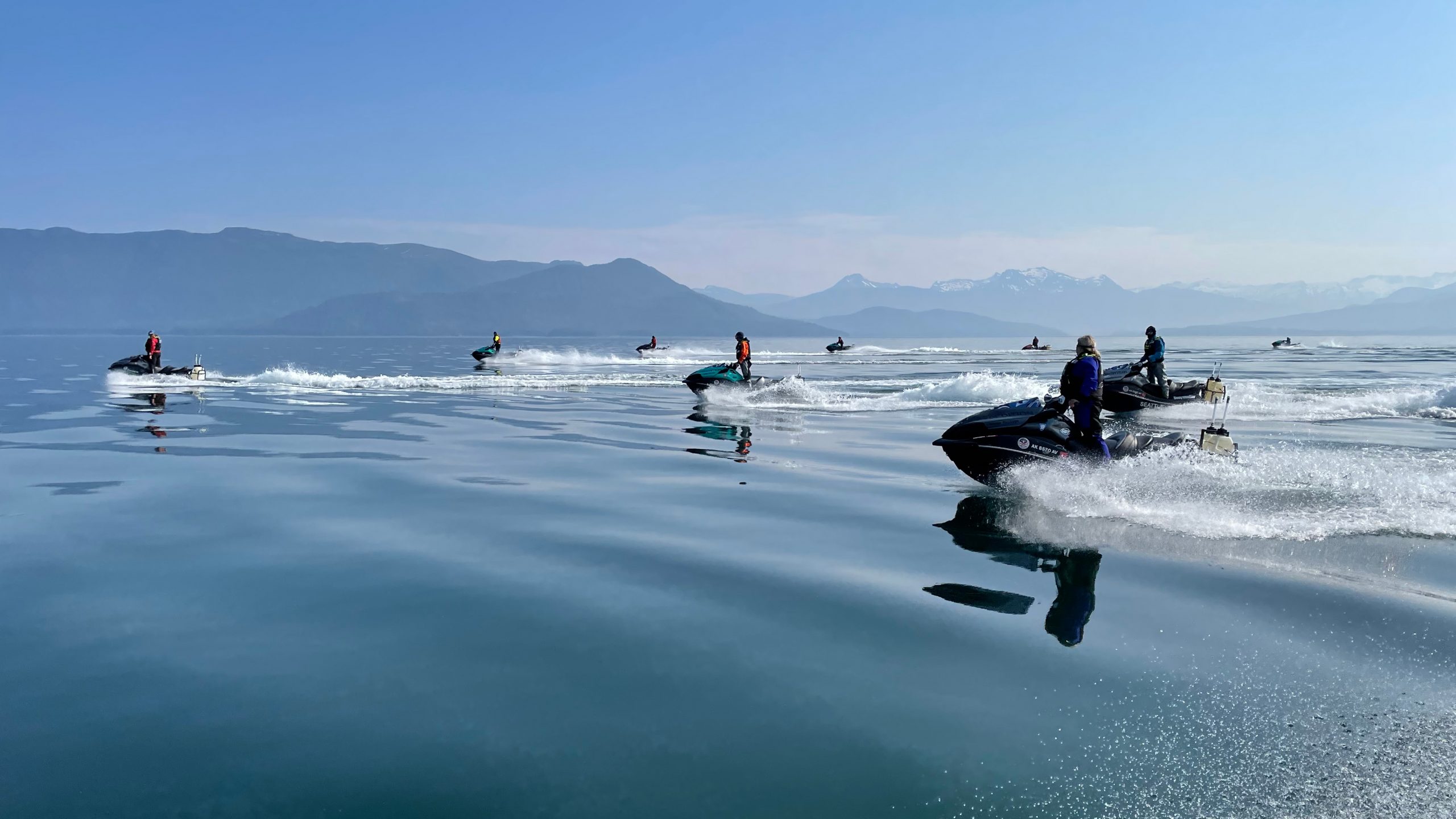
Although our trip encountered perfect weather – and glassed-out water conditions – back-to-back most days, the rain set in on the final leg of the tour.
And we got a taste of what the Alaska Jet Ski tour is really like, before reaching the finish line in Juneau after seven days and 800km of riding.
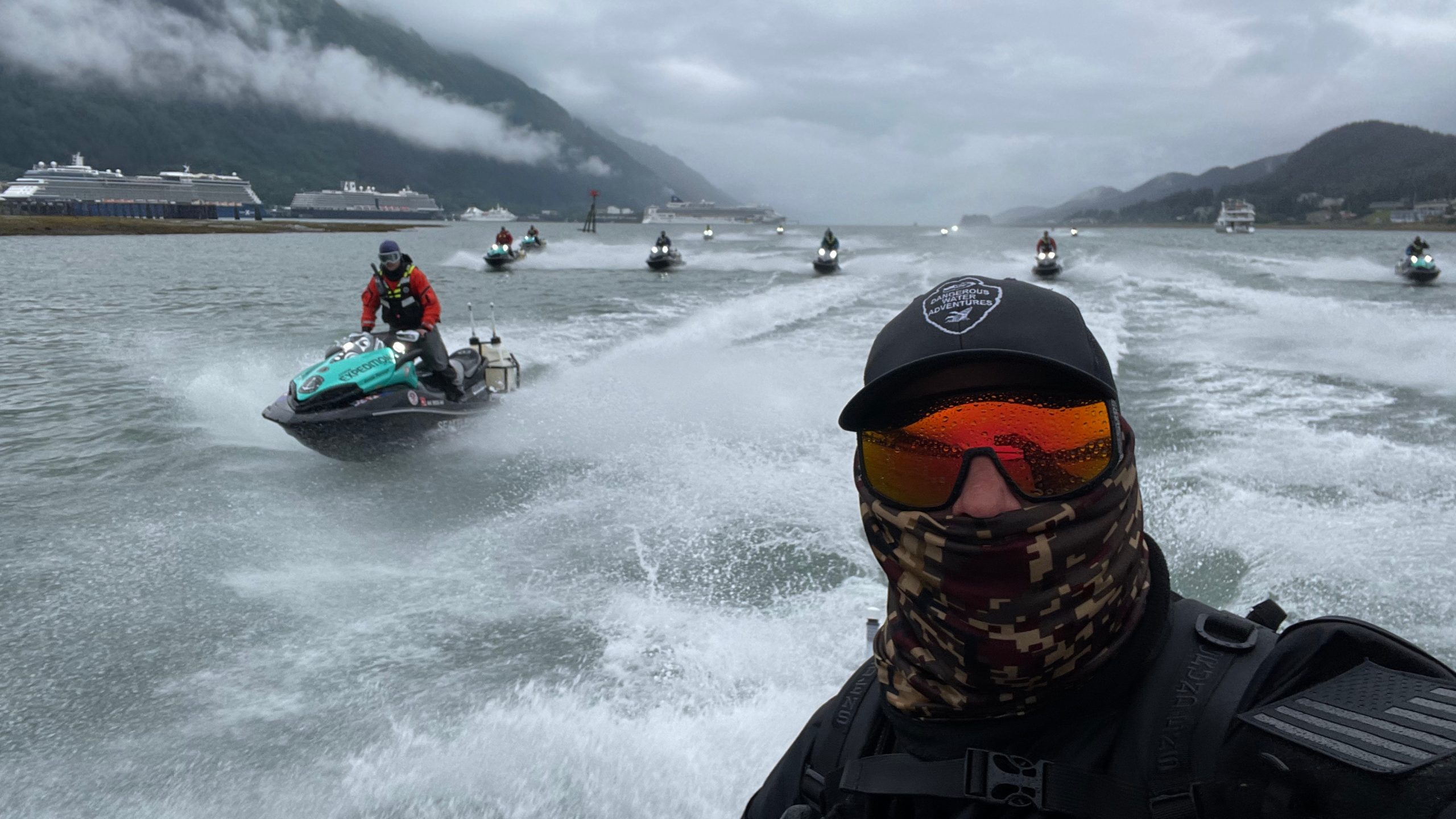
Although seven days on the water is a long time, it felt like it was over too soon.
Little wonder most guests sign up for another leg for another year.
If you’re lucky with the weather like we were, this is the trip of a lifetime.
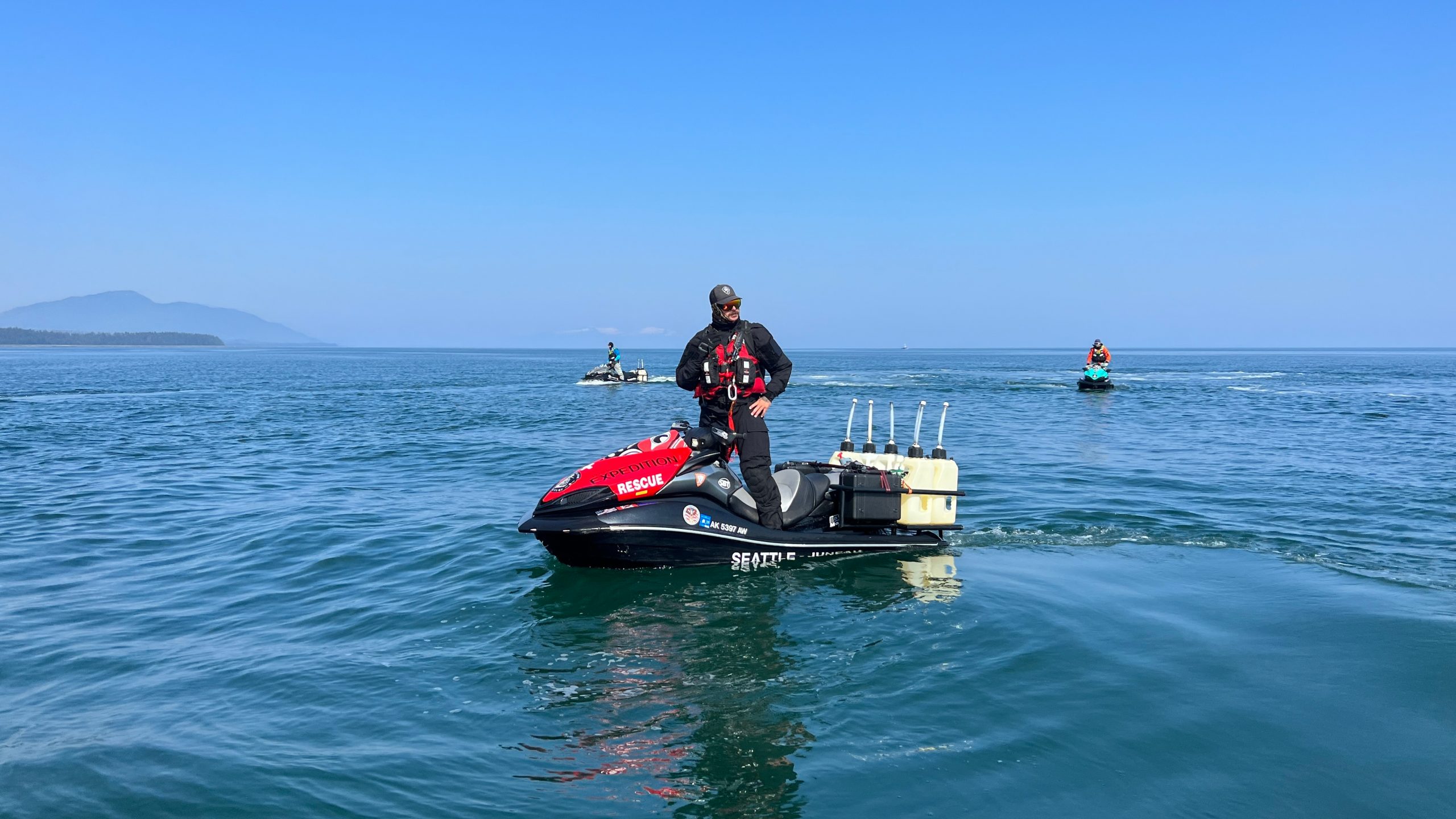
Behind the scenes
If you’re considering a Dangerous Water Adventures Alaska Jet Ski tour, this behind the scenes coverage explains what you need to know before you go.
At the time this article was published, prices ranged from $US6900 to $US9900 per person – depending on which week-long leg of the journey between Seattle and Juneau you choose.
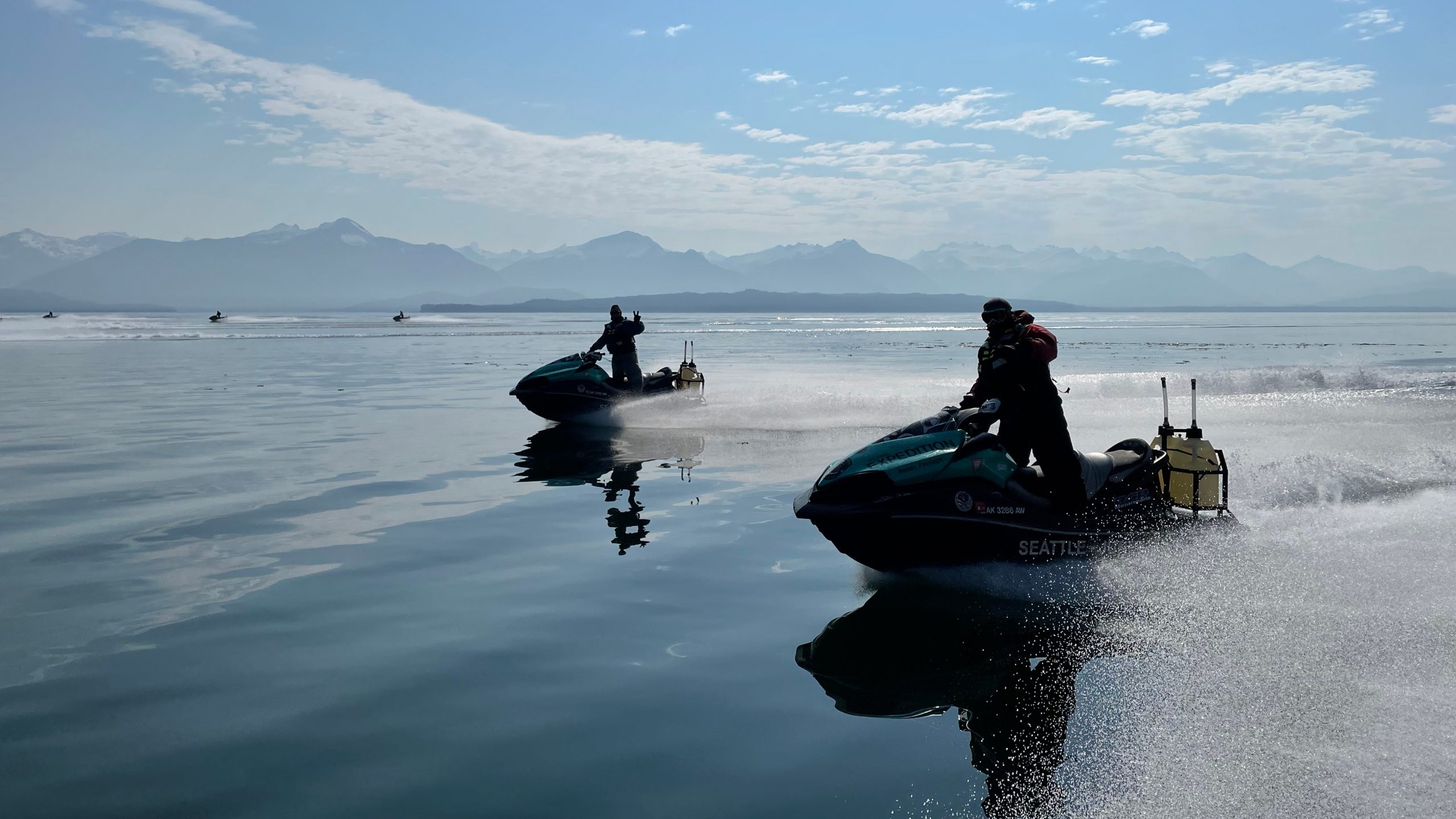
Organisers require a 50 per cent deposit up front, and the balance paid 30 to 60 days before your tour is due to start.
Most tours are booked out a year or more in advance.
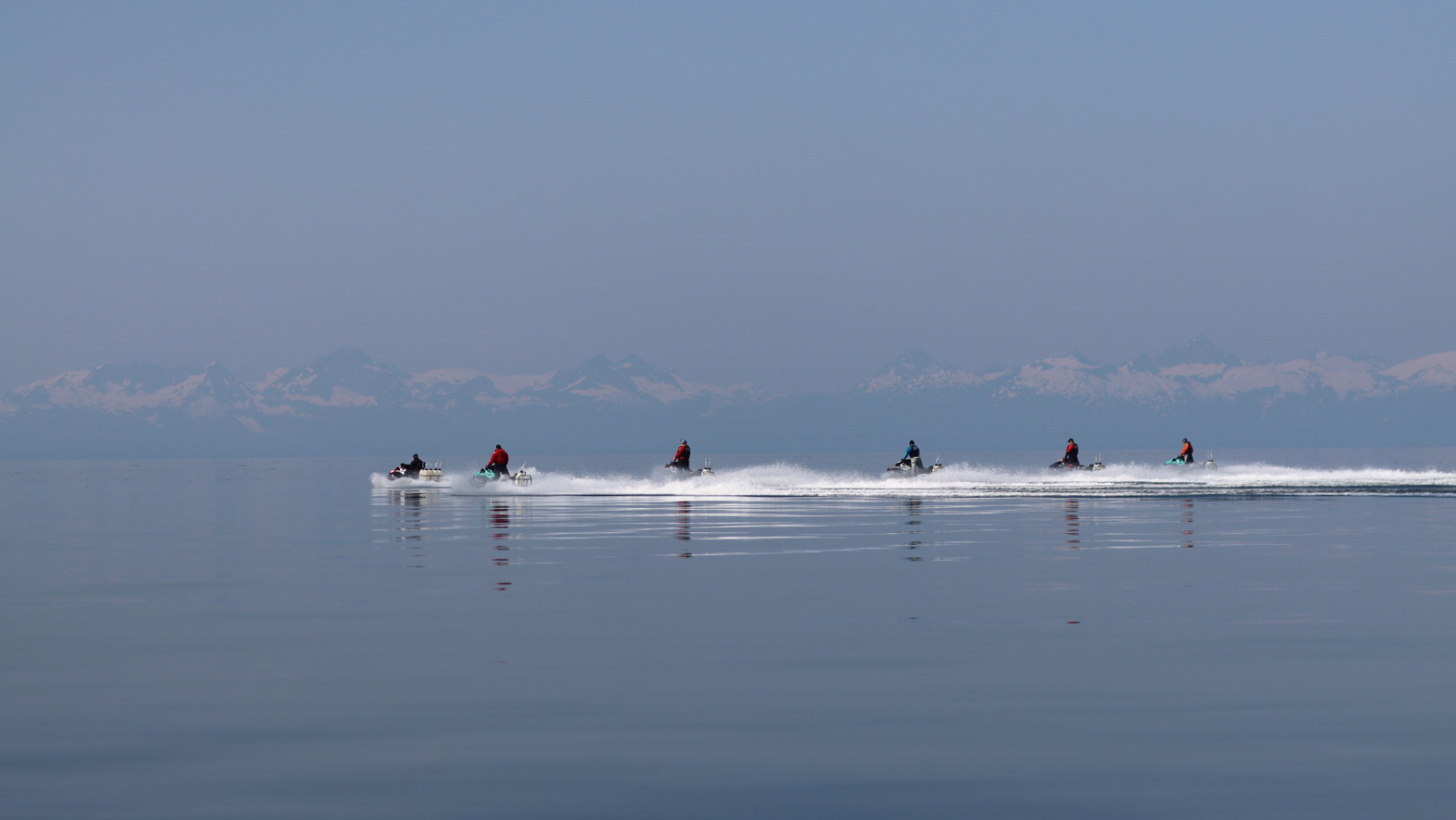
Payment includes accomodation every night, most (though not all) meals, and the use of a Jet Ski and riding safety gear.
Fuel is also covered, though this is subject to change amid sharp price rises, so be sure to check.
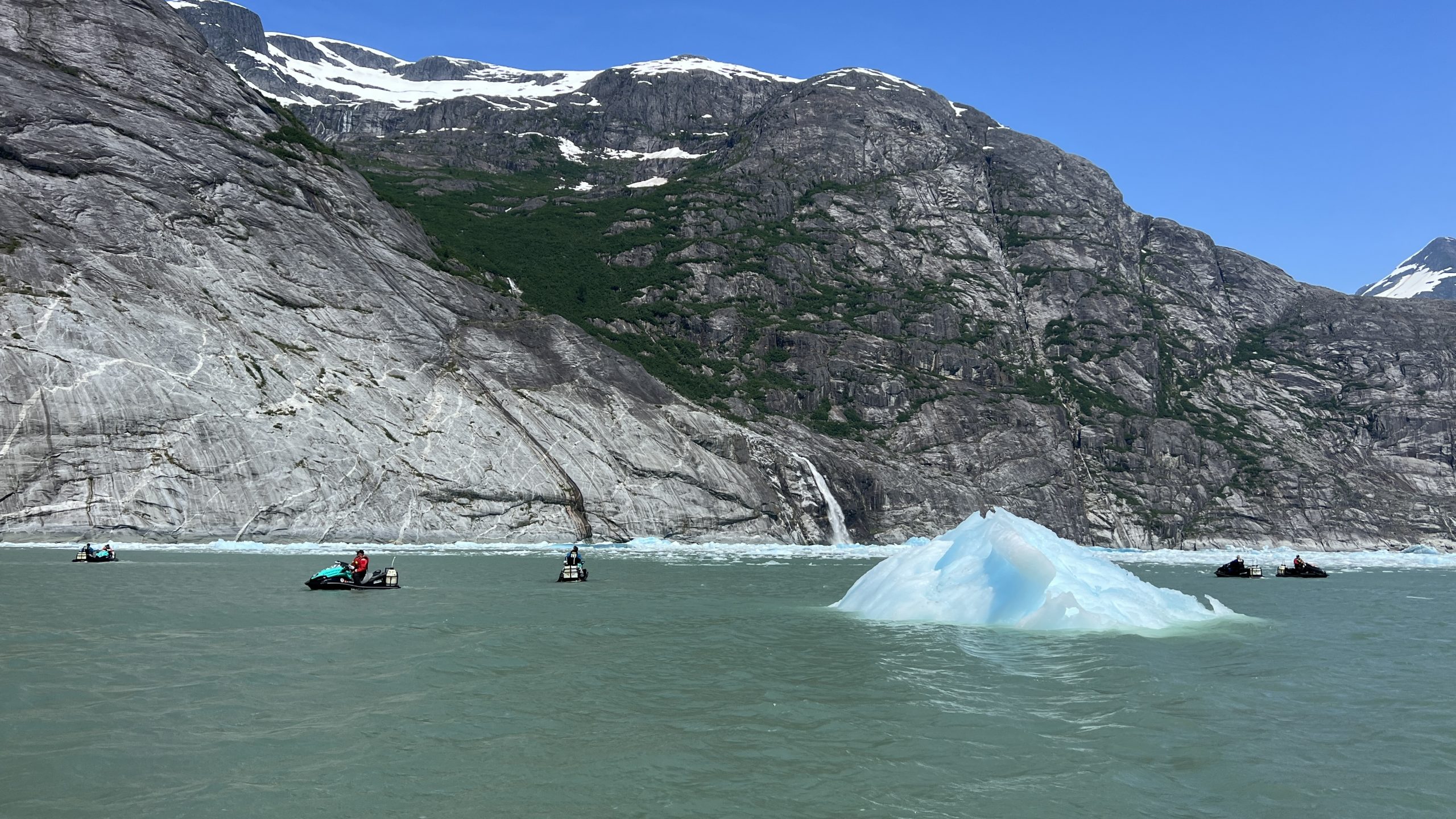
Riders need to cover their costs to get to and from the start and finish points of the trek (and pay for their own accomodation on the eve of the start day).
Organisers have no provision to send extra luggage ahead of you.
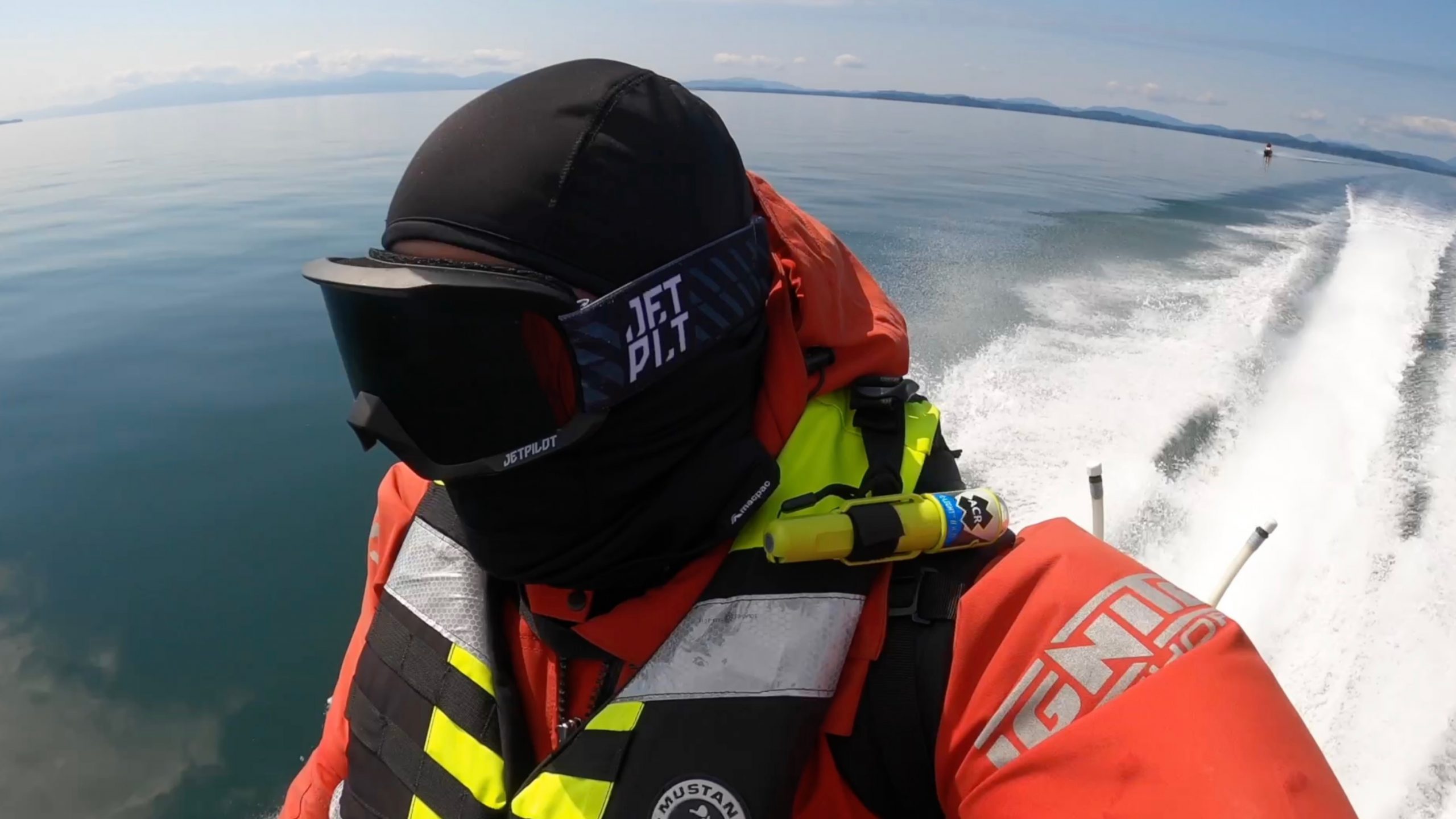
Alaska Airlines is able to send unaccompanied luggage – but only within Alaska – and you need to locate their airfreight division rather than the main terminal.
The trek is held in the warmer months of the year, from June to October.
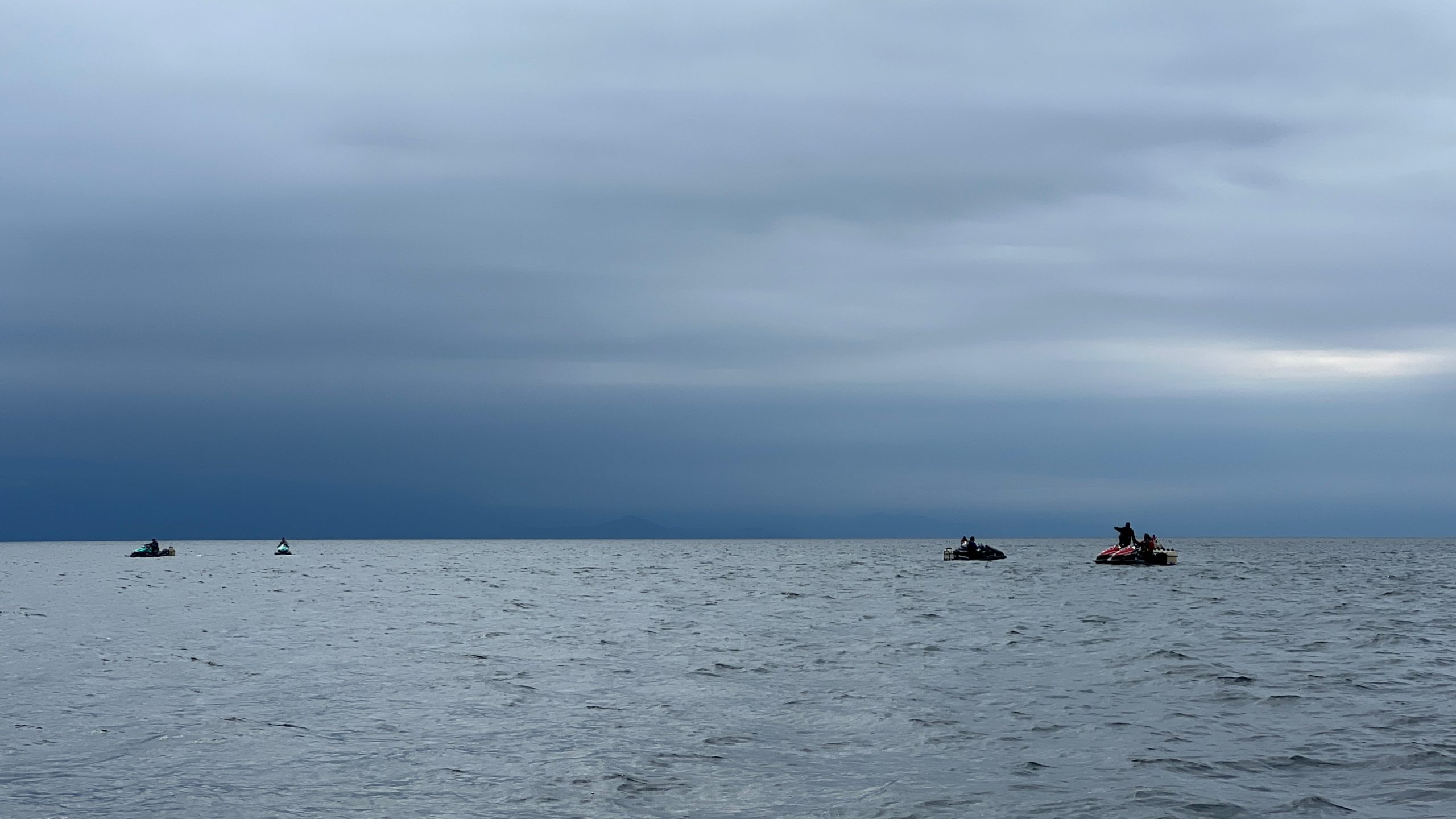
Most legs take seven days to cover – including a rest day or weather day – though there are some longer nine-day rides.
Every trip has a provision for a weather day in case it’s too dangerous to be on the water.
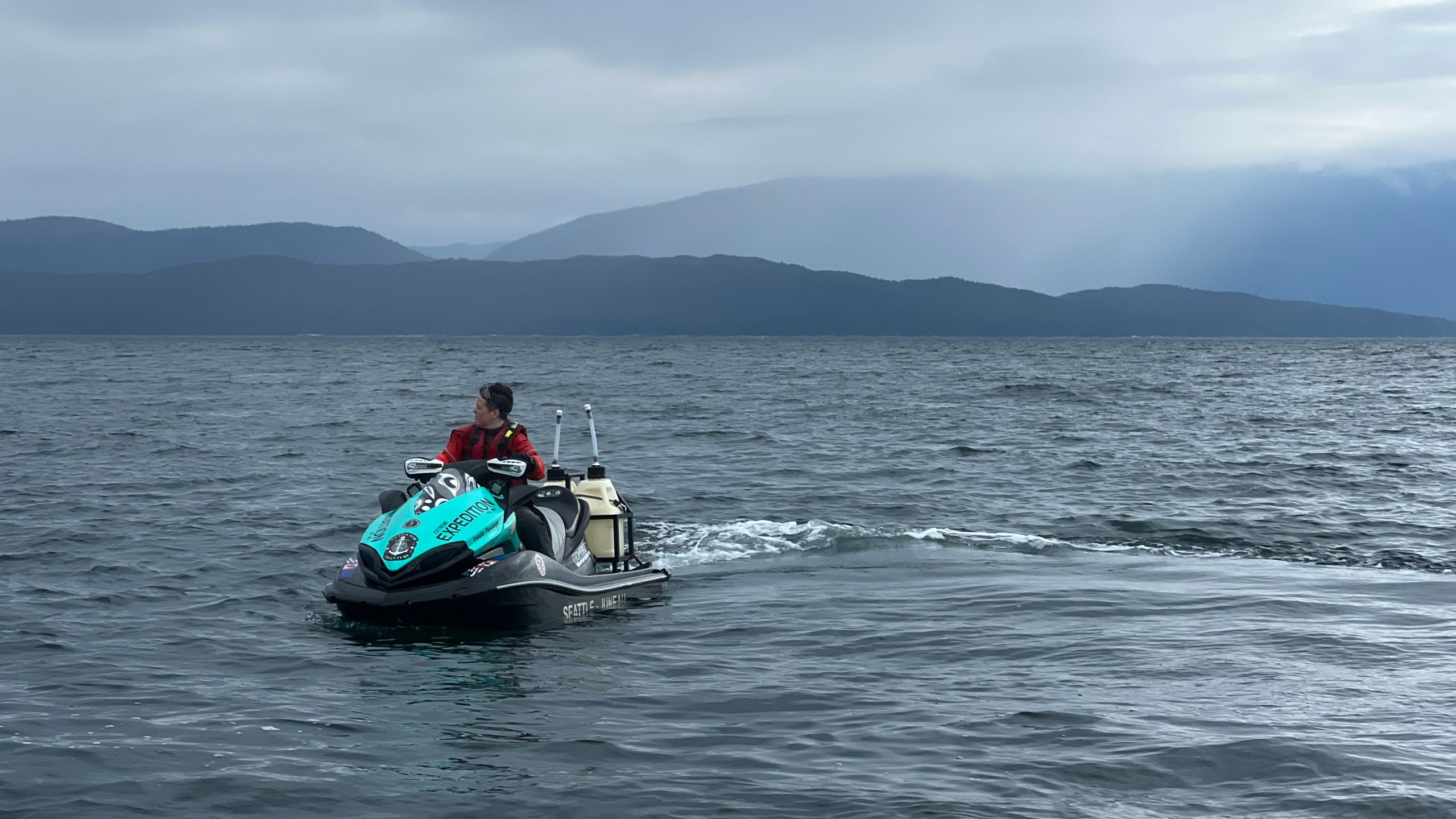
There is no refund for the day or days you’re not on the water due to weather.
In the early days, the Jet Ski tour camped some nights, however all participants now stay in motels, most of which are modest but comfortable.
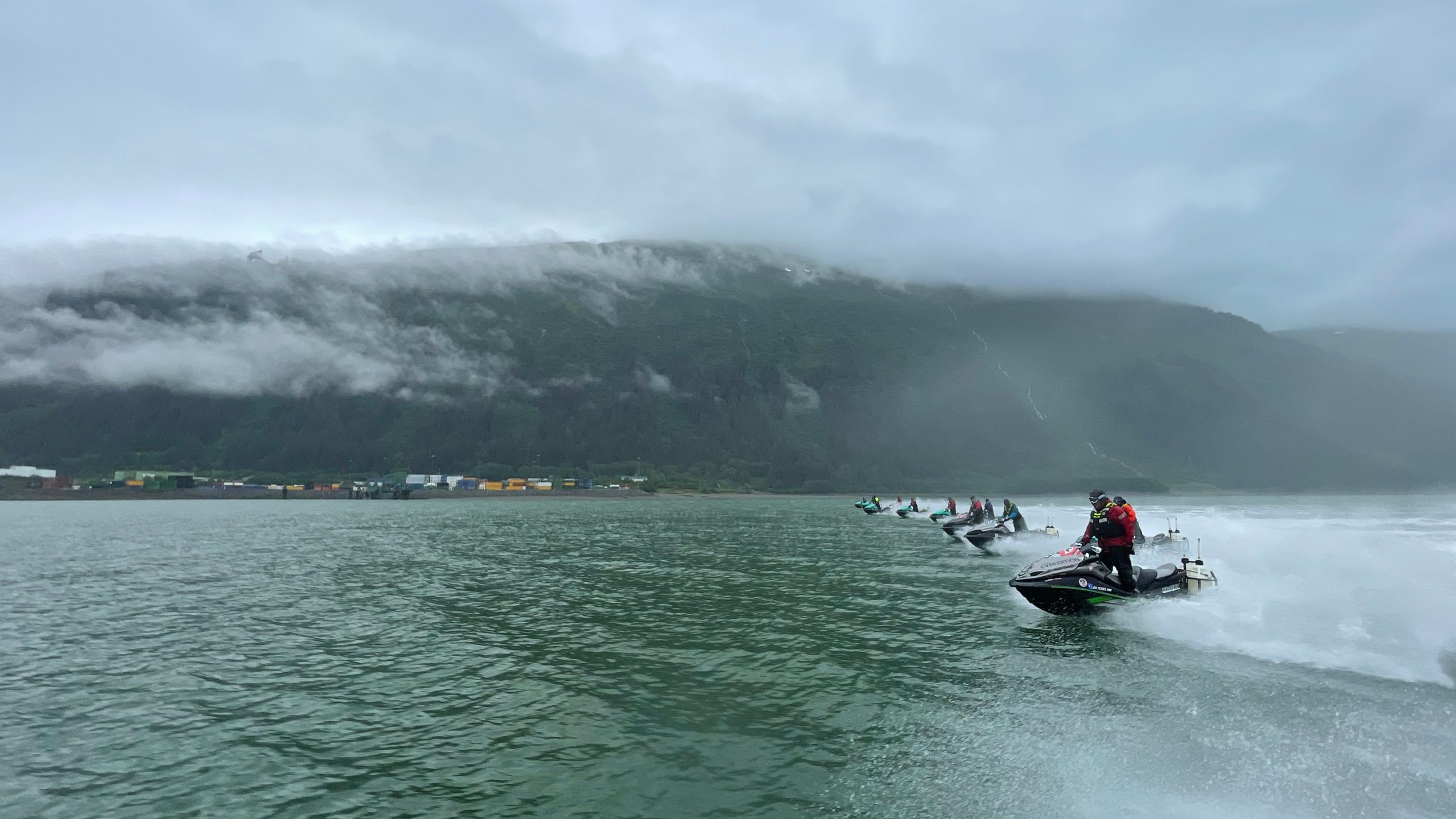
It’s worth noting while the start and finish points are generally locked in, the day-to-day itineraries are subject to change depending on the weather – and the guides make that call at the beginning of each day.
Wind and ocean swell are two of the key deciding factors.
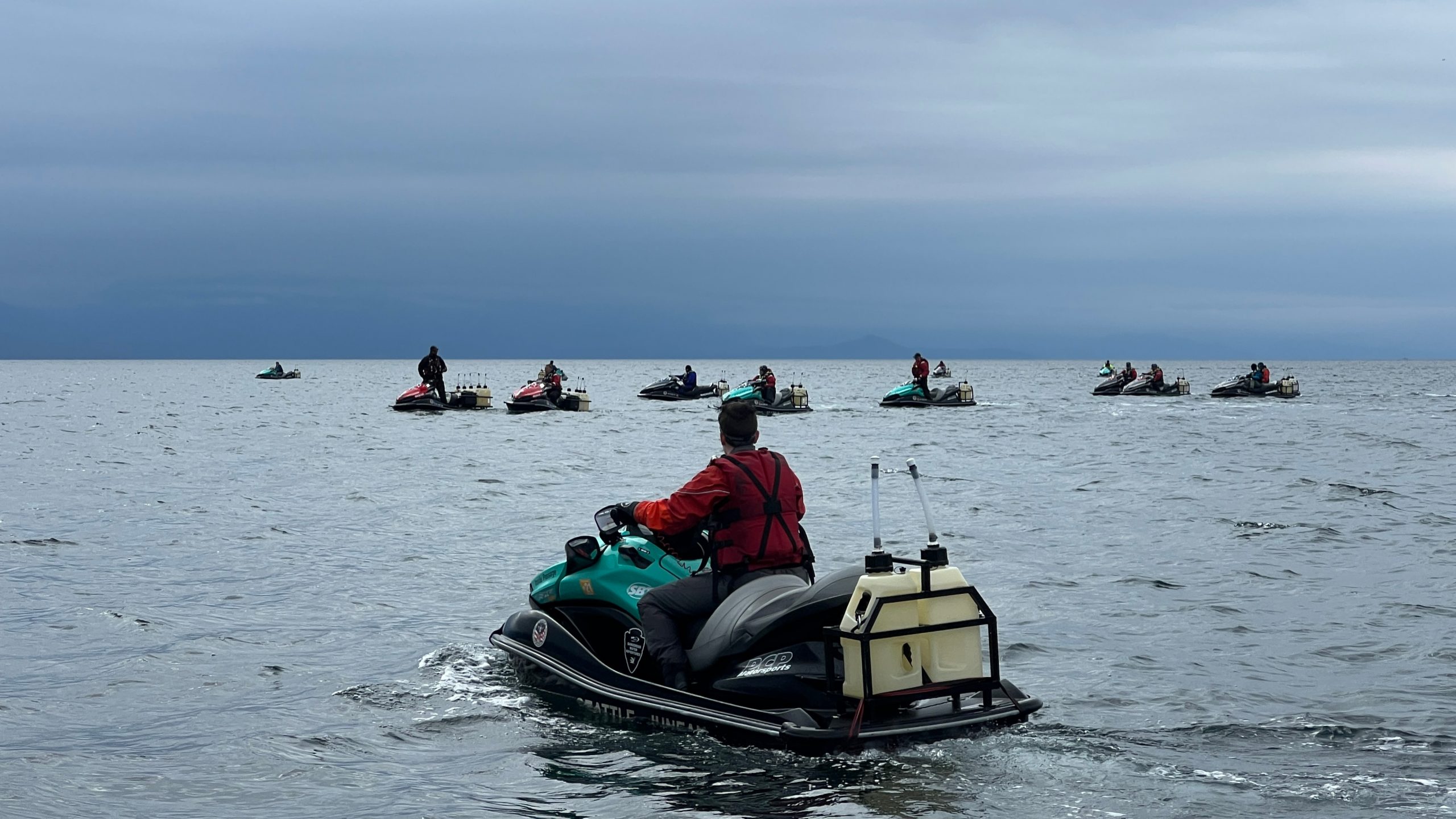
On our trip, we got lucky with the weather and rode every day – with much of the water glassed out on all but one day when we copped heavy rain, but in this instance it was not enough to stop our journey.
A lot of the riding gear is supplied but you do you need to bring some clothes while at the same time pack light.
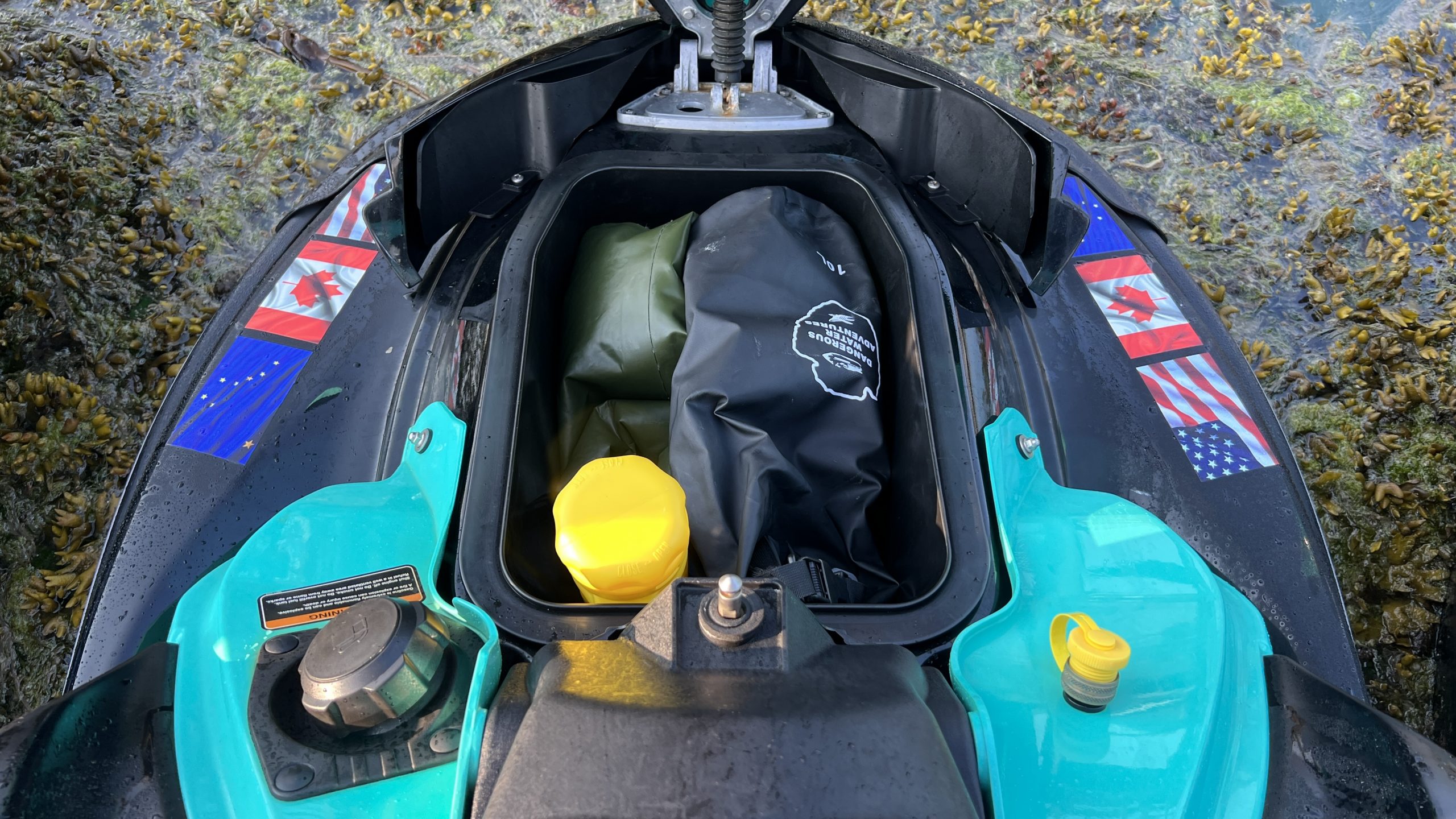
Everything you need for the week needs to be on the Jet Ski.
Organisers recommend riders bring two sets of woollen long-sleeve base layer tops and bottoms (one to dry out between ride days), a pair of gloves, a ski mask, goggles, and sunscreen.
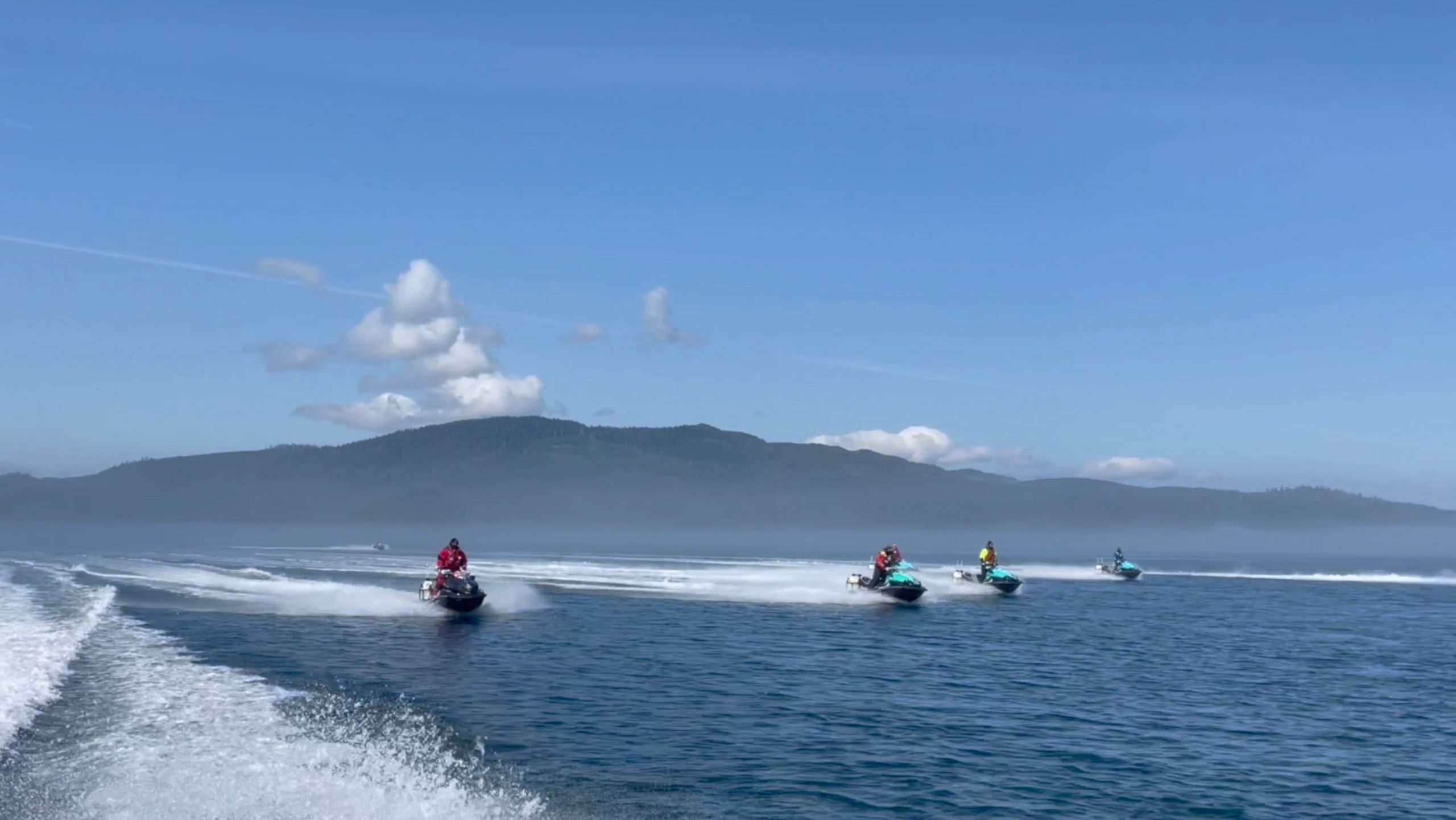
Riding gloves are supplied, but they are secondhand and may not fit well.
We brought along our own Sea-Doo neoprene gloves, a MacPac snow ski mask, and full-size widescreen Jet Pilot goggles designed for Jet Ski riding.
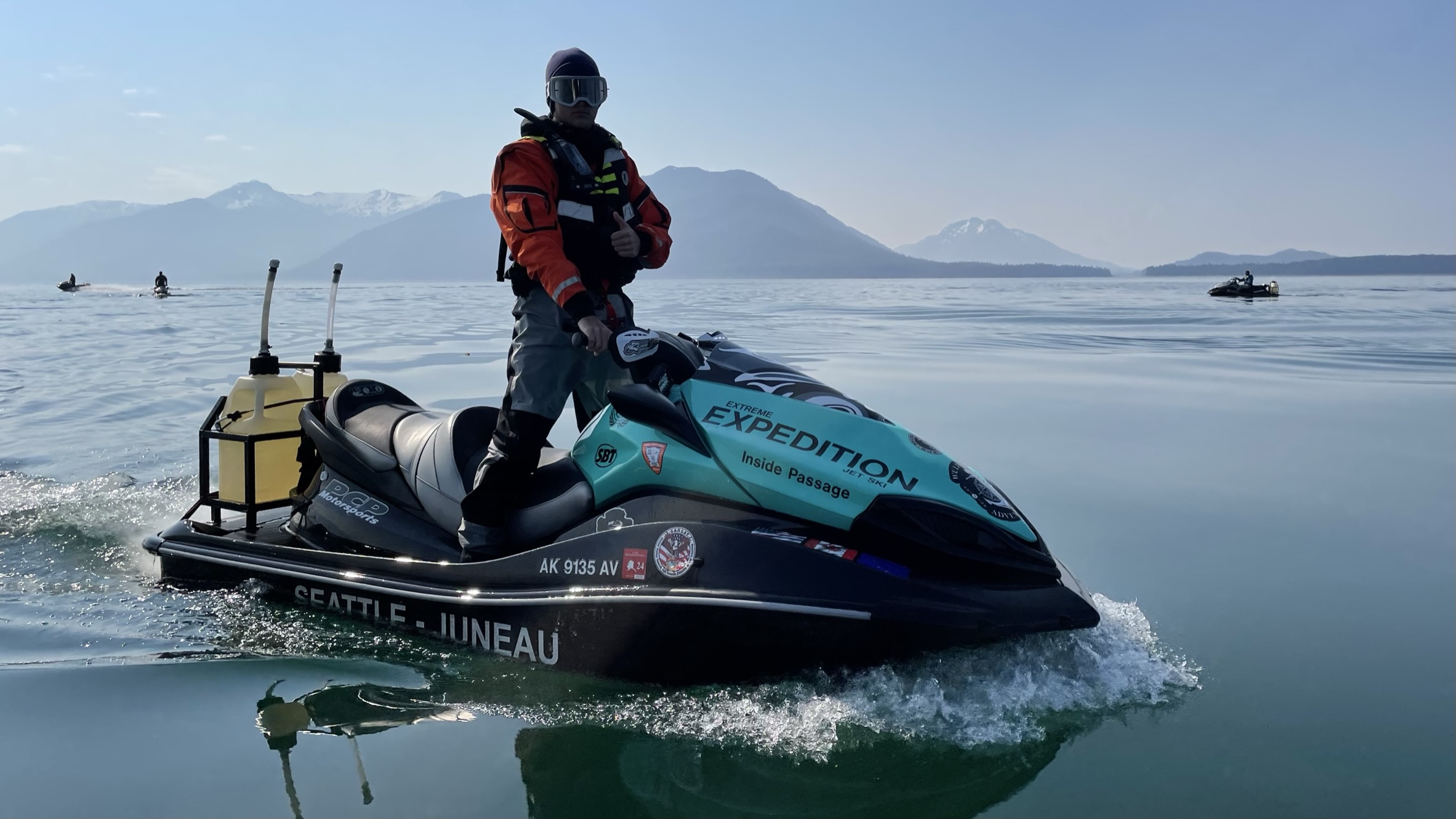
Sunglasses aren’t enough to stop water spray and, with the speeds you’ll be travelling, sunglasses will be lucky to last the first hour, let alone the first day.
Tour organisers supply a dry suit, oversized boots, and a life vest, all of which is returned at the end of the tour.
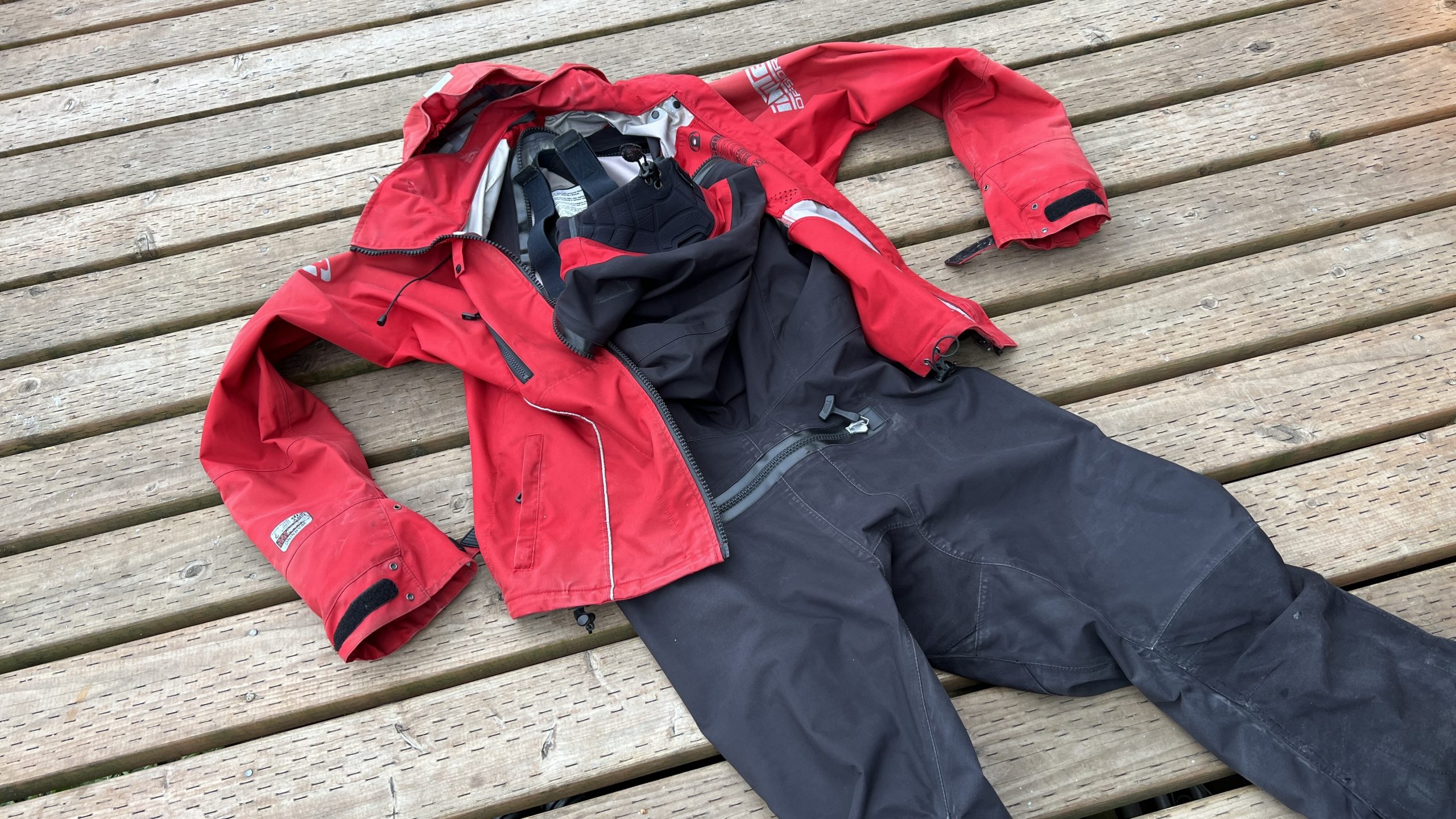
The dry suit has internal straps to stop the suit sliding down, a tight rubber-lined neck, and various zippers to keep the heat in and the cold out.
The dry suit has built-in booties, which is why the neoprene boots issued are a few sizes larger than your shoe size. It seems odd but it works.
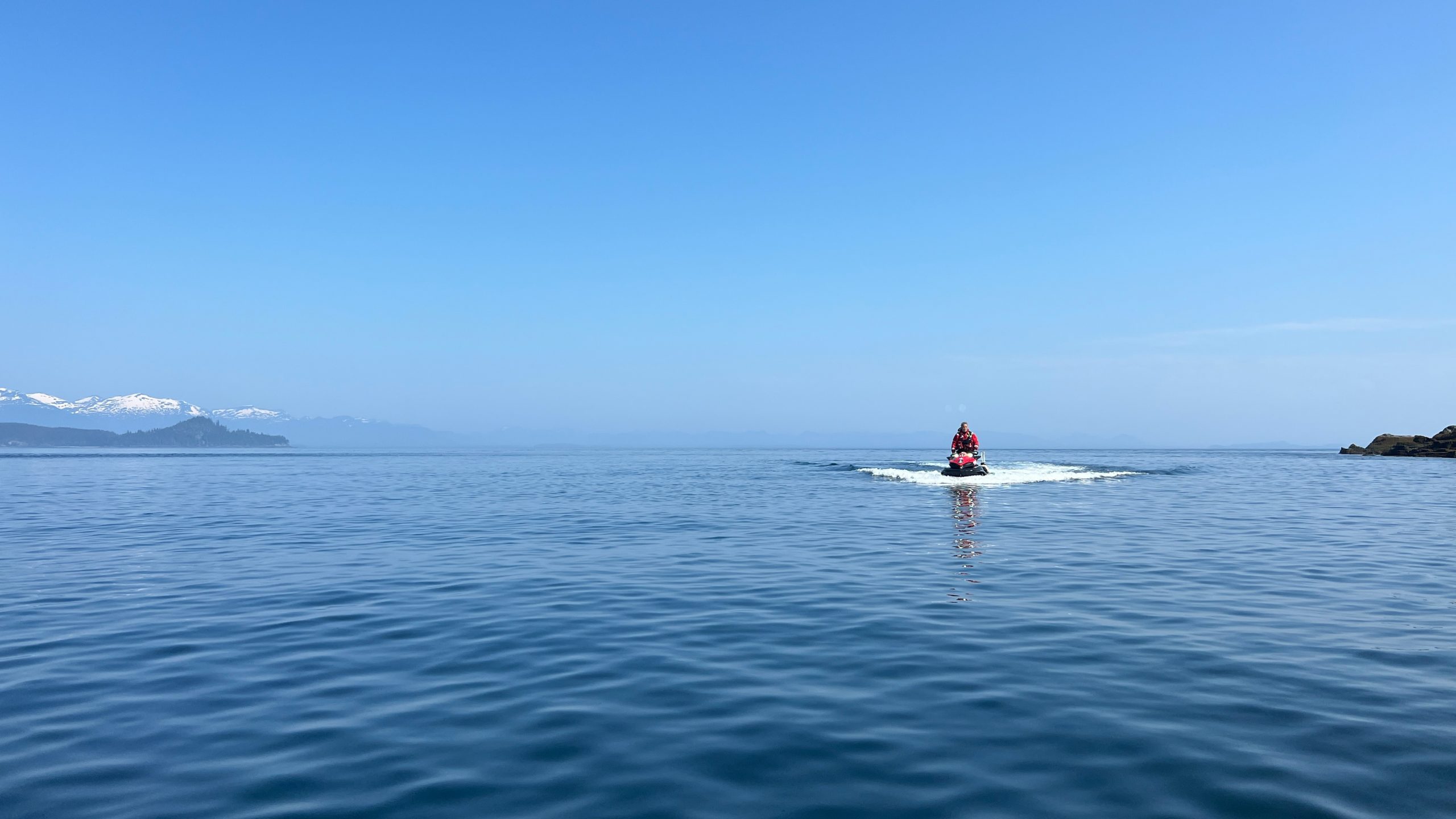
On our trip, the temperatures were mild, ranging from 15 to 20 degrees Celsius most days (60 to 70 degrees Fahrenheit), even near the ice bergs.
However, the weather has been known to dip to 5 to 10 degrees Celsius (40 to 50 degrees Fahrenheit) throughout the tour.
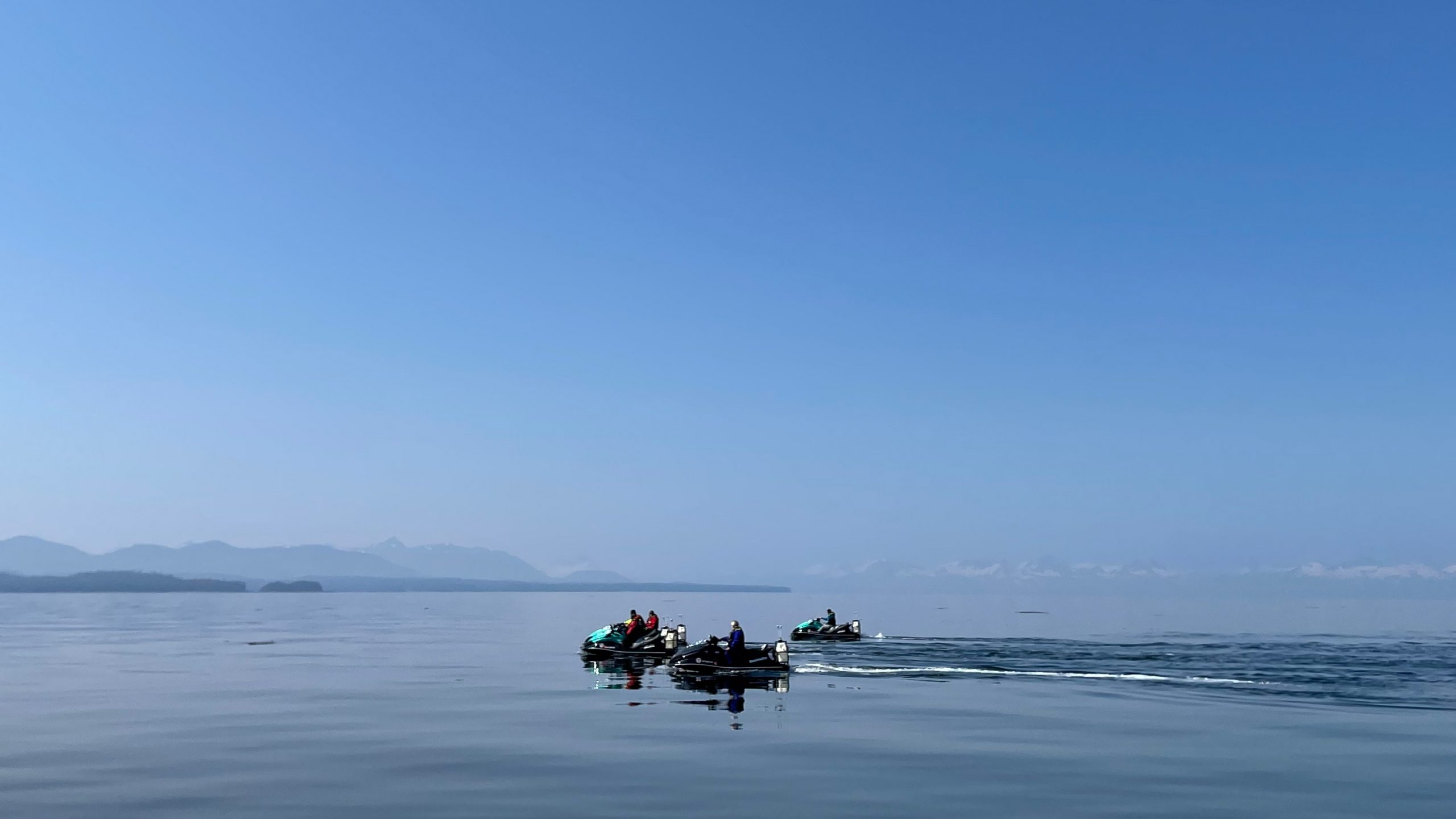
The dry suit is so hot it can make you sweat when you’re on the dock loading the Jet Ski at the beginning of the day, but once you’re on the water and up to speed you quickly cool down.
This particular generation of Kawasaki Ultra LX Jet Ski has a massive cargo hold in the nose, however you will still need to pack light.
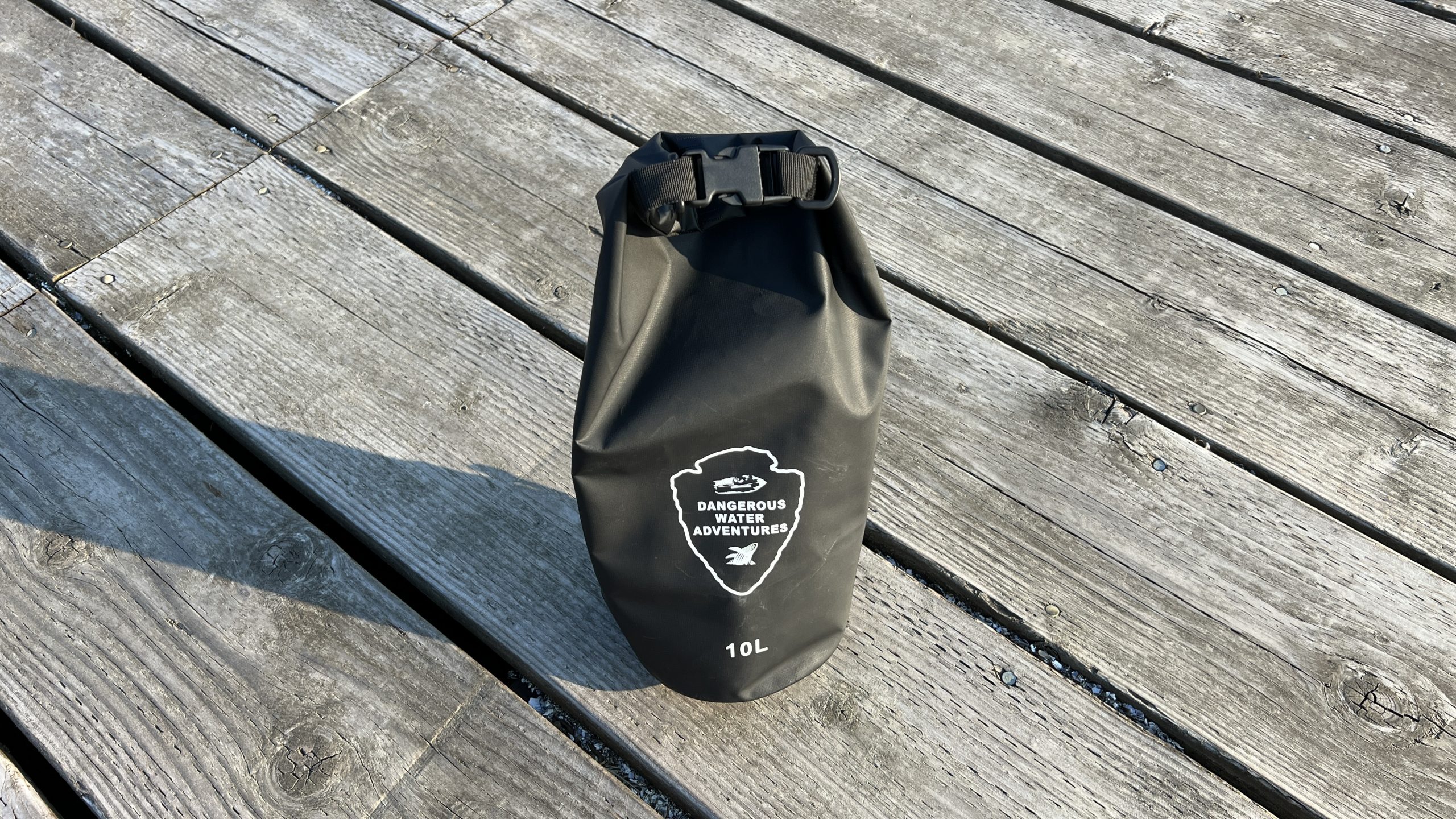
Organisers supply a 30-litre and a 10-litre dry bag on check-in – and you’re advised to make sure all your belongings fit into these.
The supplied 30-litre dry bag is thin and not very durable.
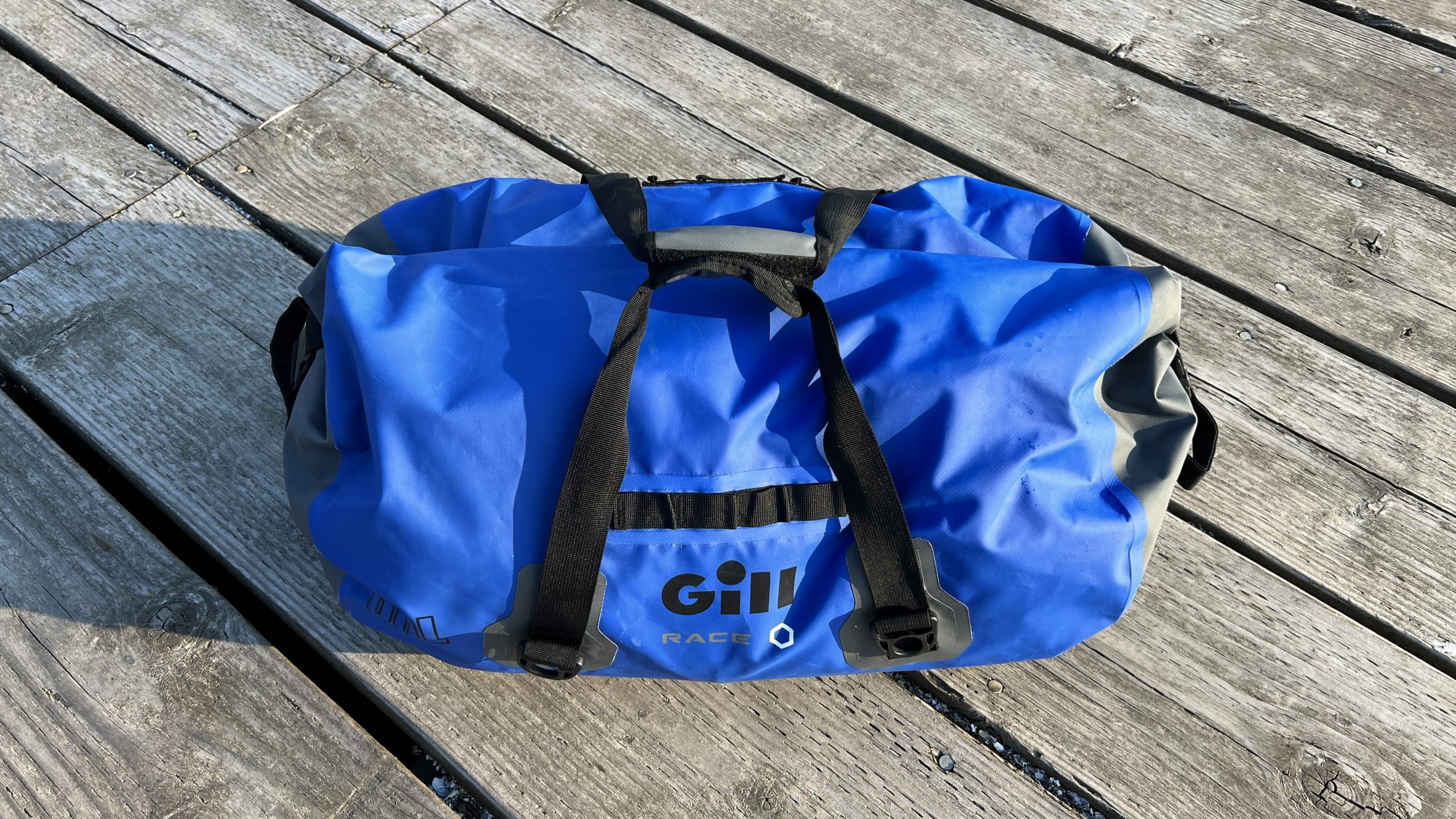
Fortunately we took our own heavy-duty 60-litre Gill sailing dry bag which was thicker, stronger, and easier to carry. We made sure not to fill it, so we could roll it down to size.
We used the Dangerous Water Adventures 10-litre dry bag as a quick grab-bag for camera gear and spare gloves and goggles we brought with us.
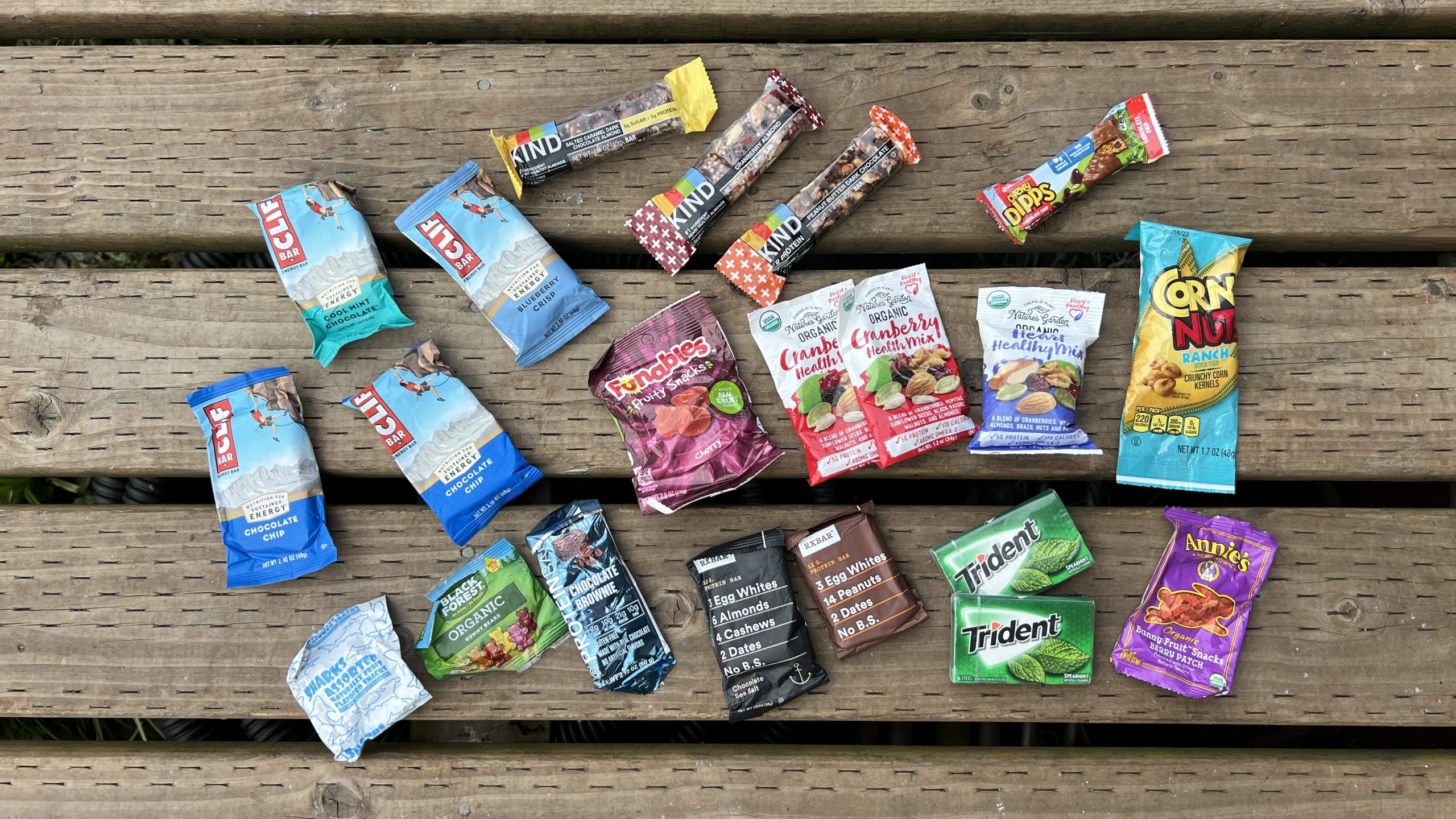
Dangerous Water Adventures provides a small ziplock food bag with snacks to keep you going during the day.
It’s worth noting the tour rarely stops for lunch. The only time to snack is when pausing briefly to refill the skis with fuel on the water. While others are getting refuelled, there are a few minutes to grab a quick bite.
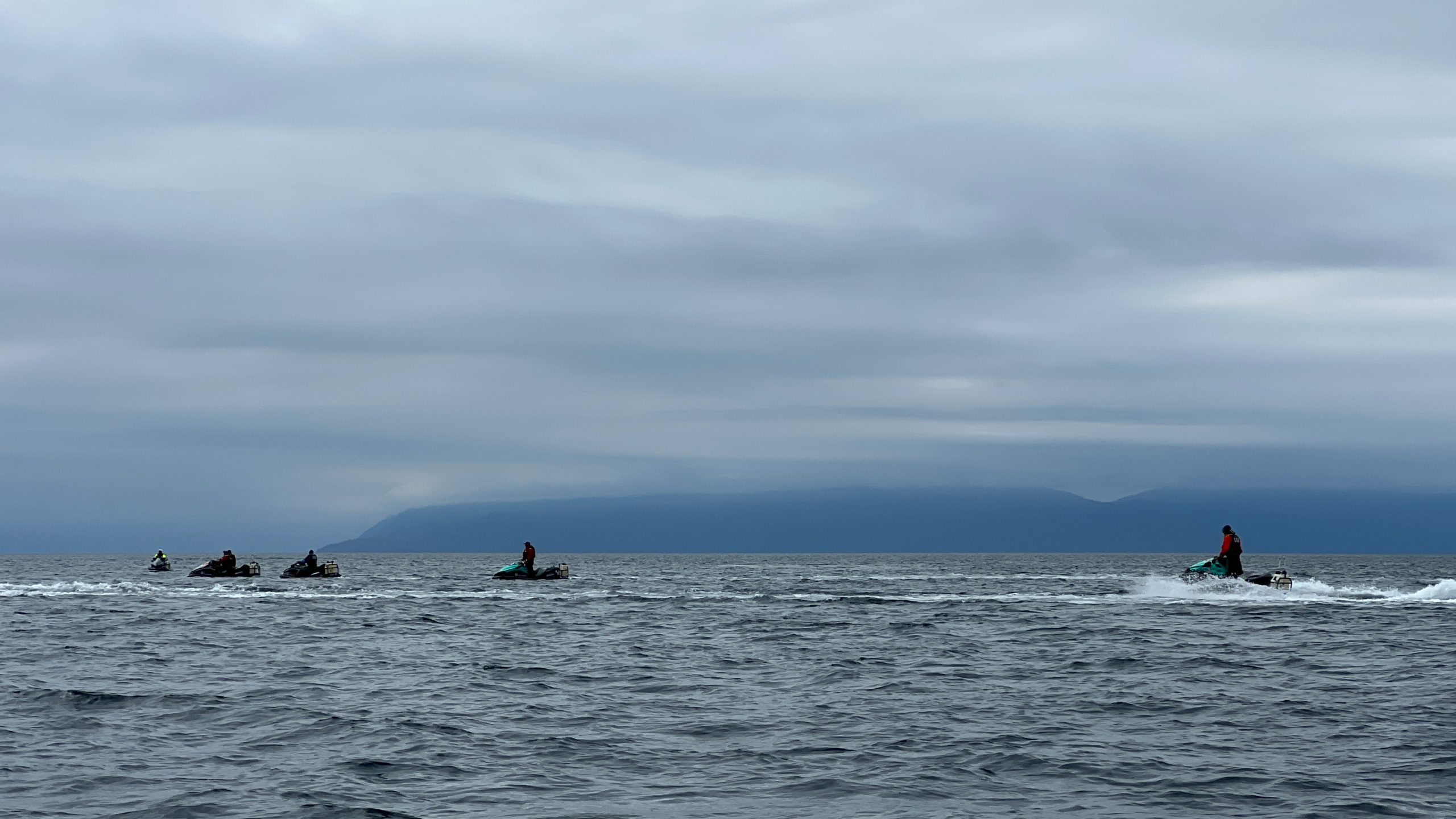
The bag of snacks is not topped up during the tour; your rations on the water need to last you the week. And you may not like everything in it.
We became a fan of the Clif energy bars and wish we bought more to last the entire week.
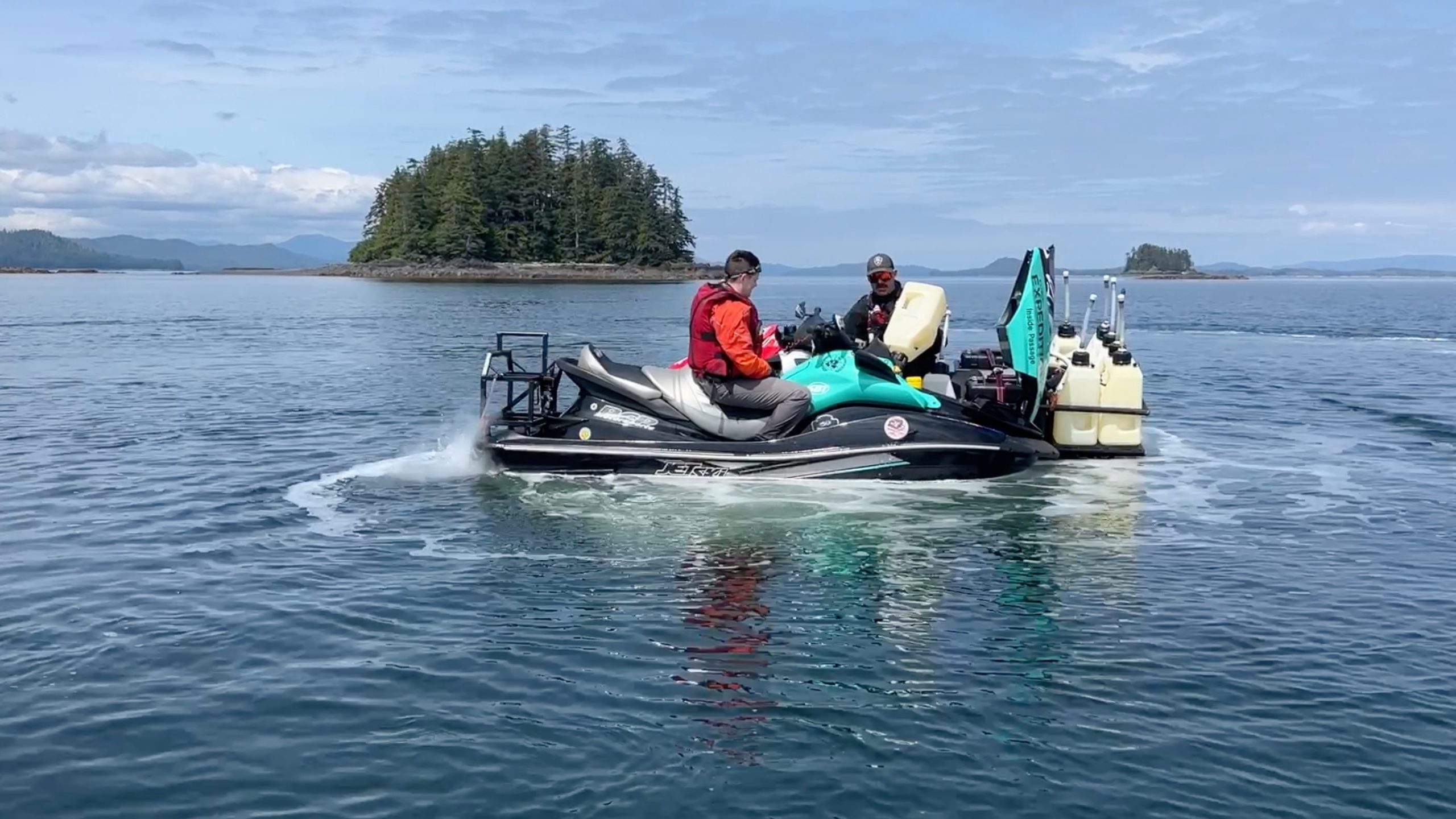
We also learned the hard way not to bring chips or dry muesli bars. These snacks quickly turn to powder due to the constant pounding at the front of the ski.
We also brought with us a 30-litre dry bag backpack, to carry a lap top computer and spare GoPro video equipment.
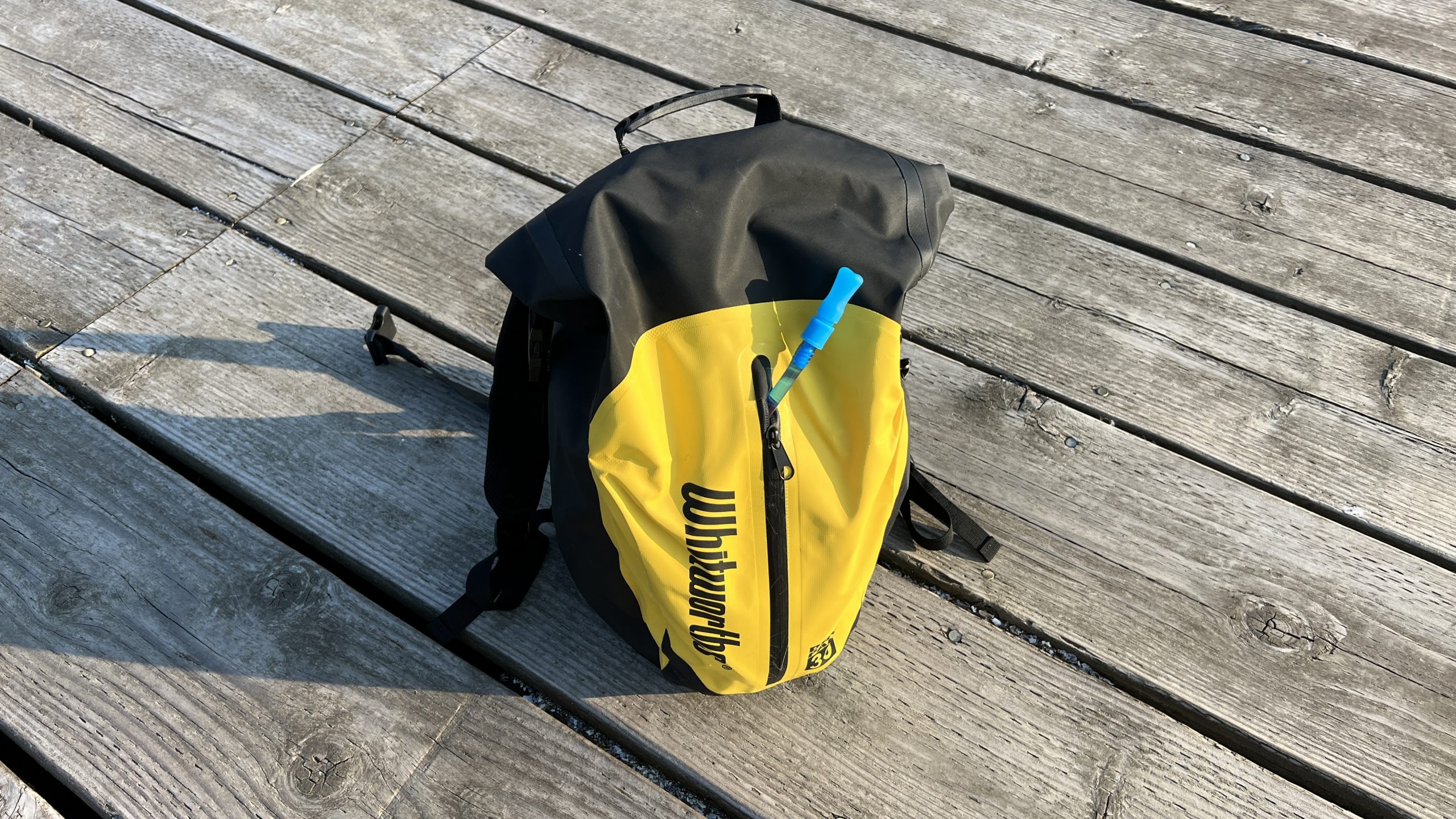
It had a handy zipper-pocket where we squeezed in a drink-water bladder that we brought with us.
However, the base of the Jet Pilot bladder nozzle developed a leak and needed daily attention, so be sure to bring a good quality water bladder.
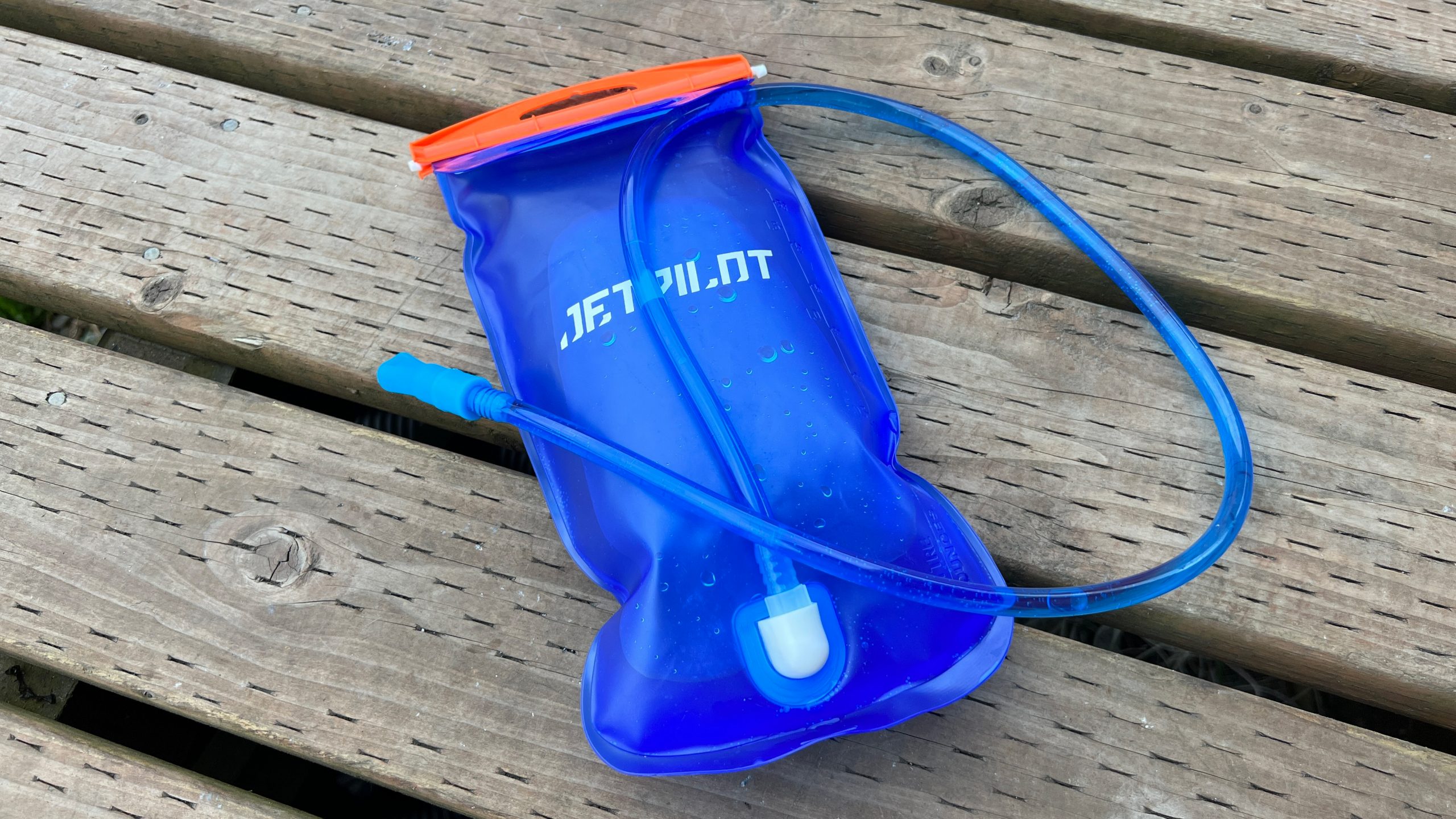
After spending a week on the water we discovered we overpacked, and would stress that you really do need to pack light. You only need the bare essentials once off the water at the end of each day.
We experimented with a bunch of waterproof phone cases including from Otter, Lifeproof, Ghostek and other random brands, but found the Body Glove Tidal waterproof smartphone cover sold at AT&T stores in the US worked best.
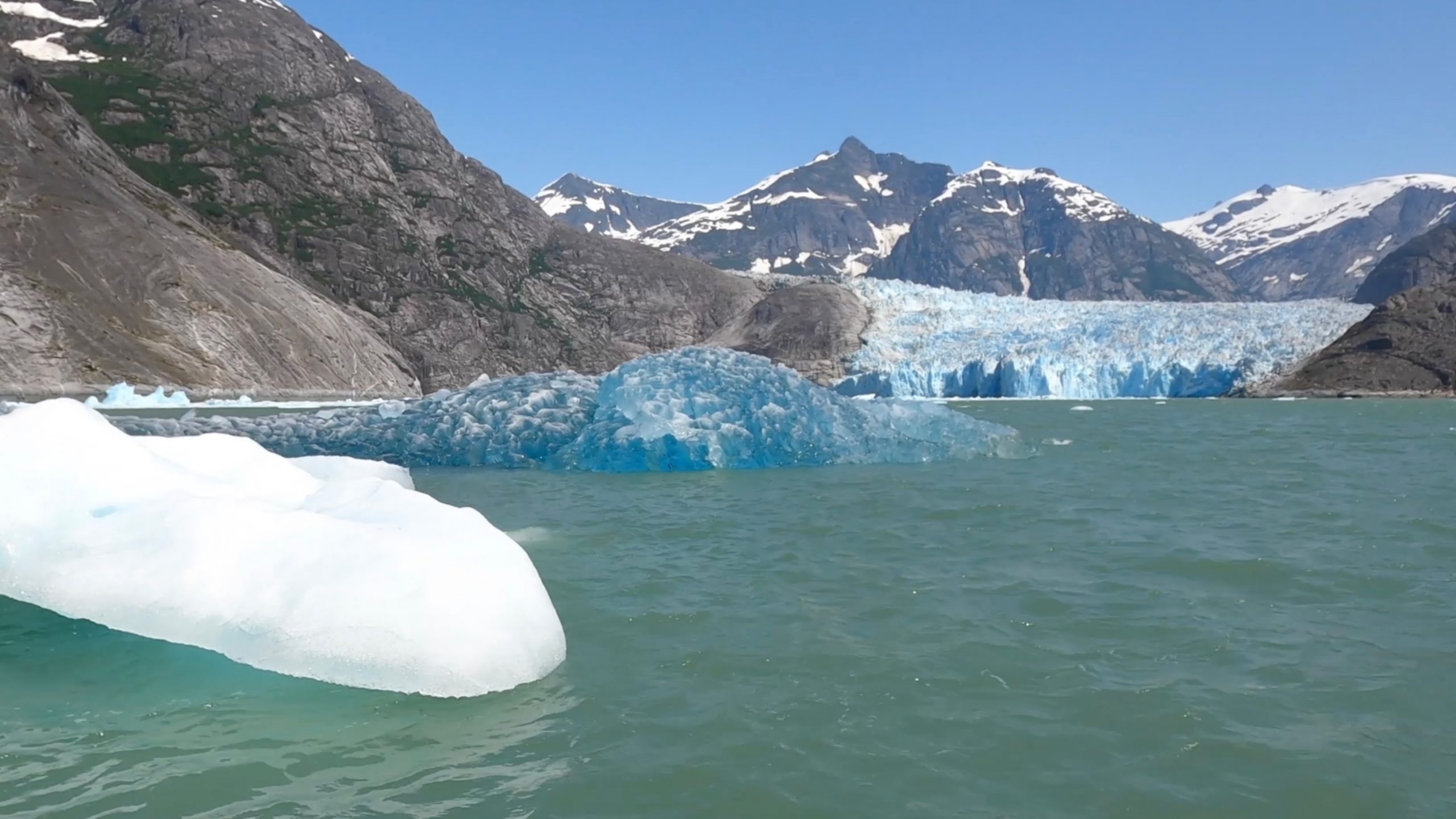
At about $US55, they were roughly half the price of the other brands and were one of a few to come with a lanyard.
The camera lenses are better protected from scratches than the other covers we tried – because of the raised section of plastic around the lens cluster.
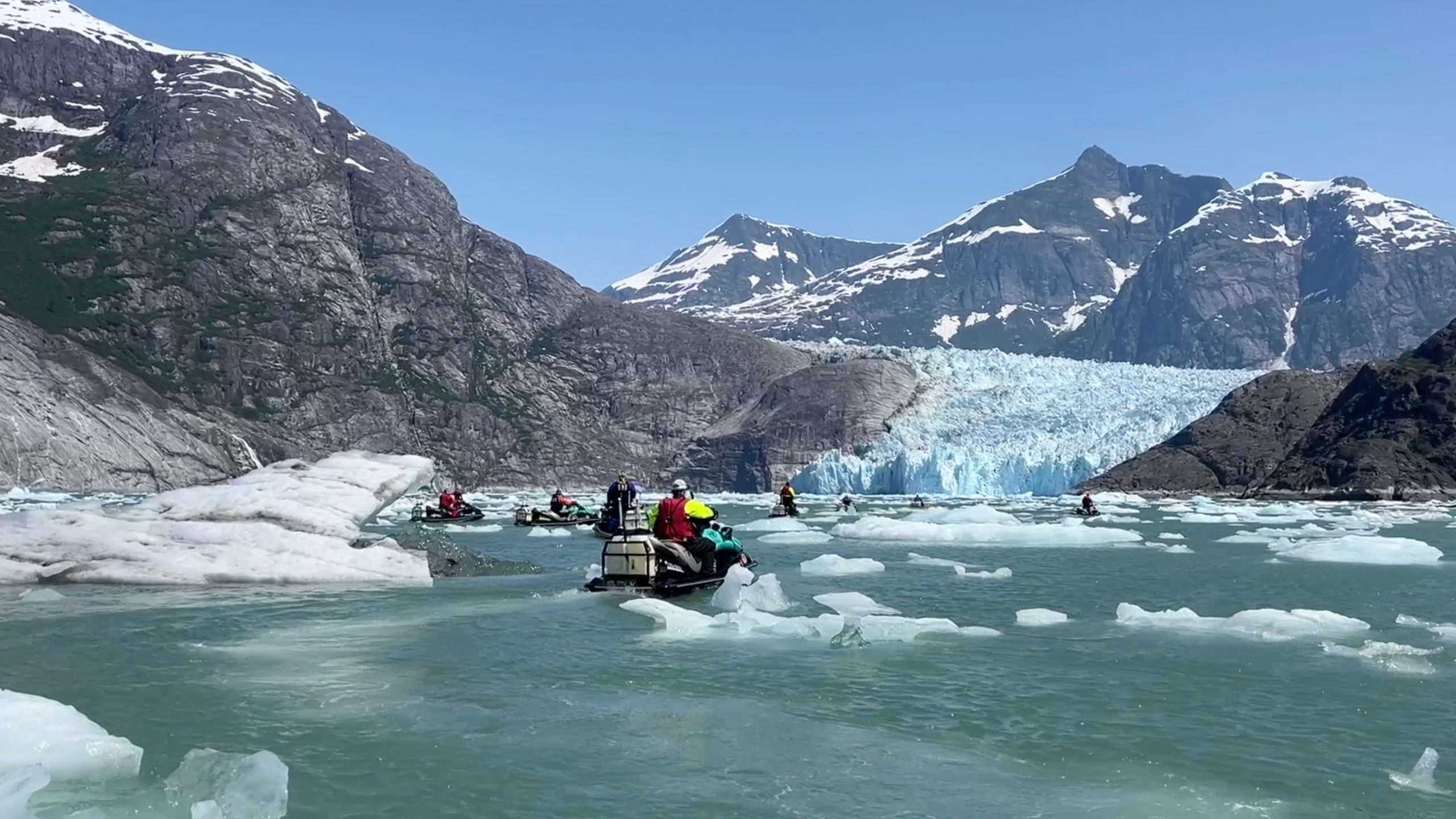
We have since stocked up on Body Glove waterproof cases for future use.
An Apple iPhone 13 Pro Max in a waterproof case and a range of GoPro 8 and GoPro 10 video cameras were used to capture photos and video footage.
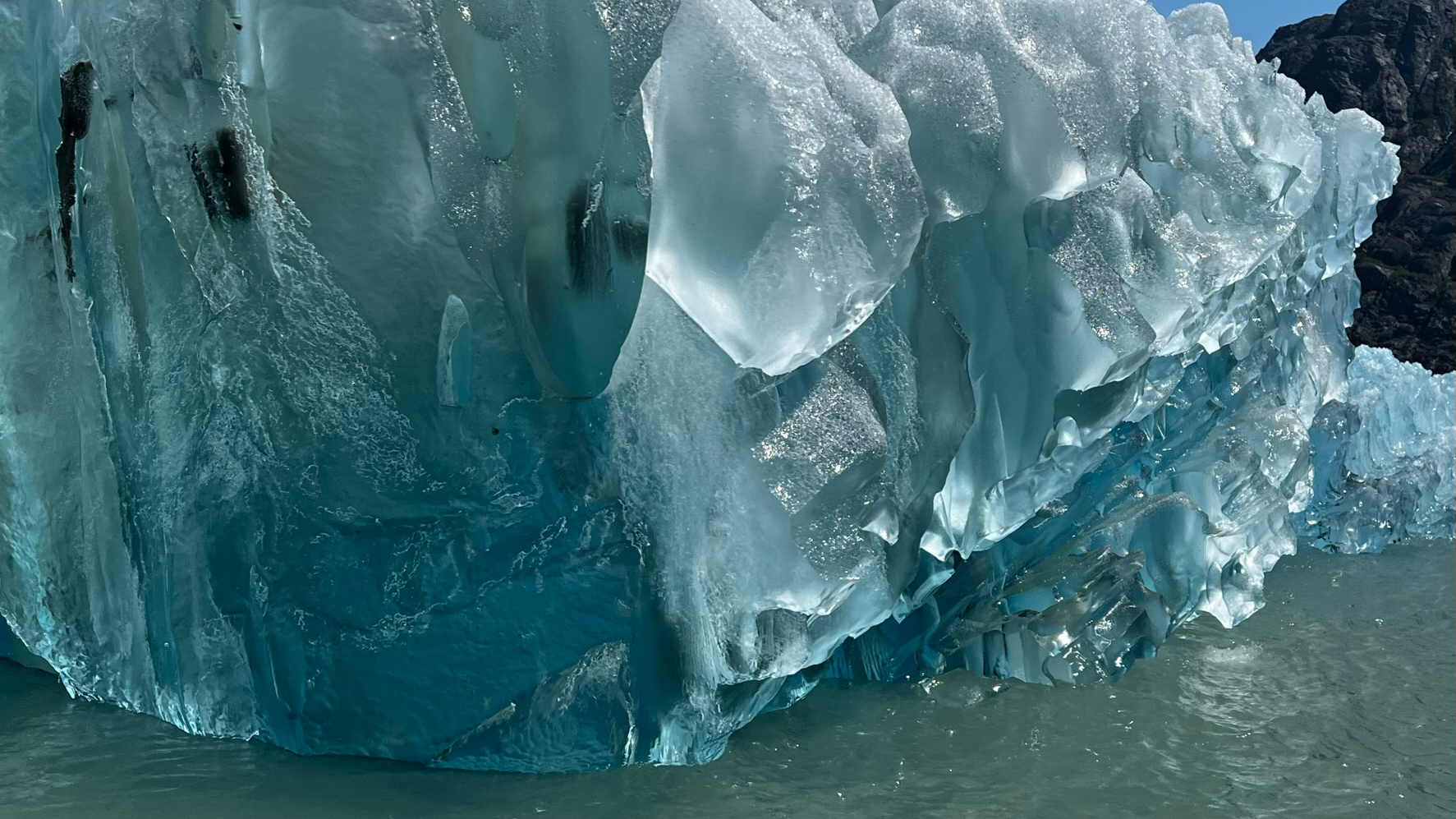
The iPhone footage was handheld while the GoPros were attached to a GoPro floating selfie stick.
While some of the accomodation on the trip was top-end, most of the accomodation was modest but comfortable. There was good food available every night.
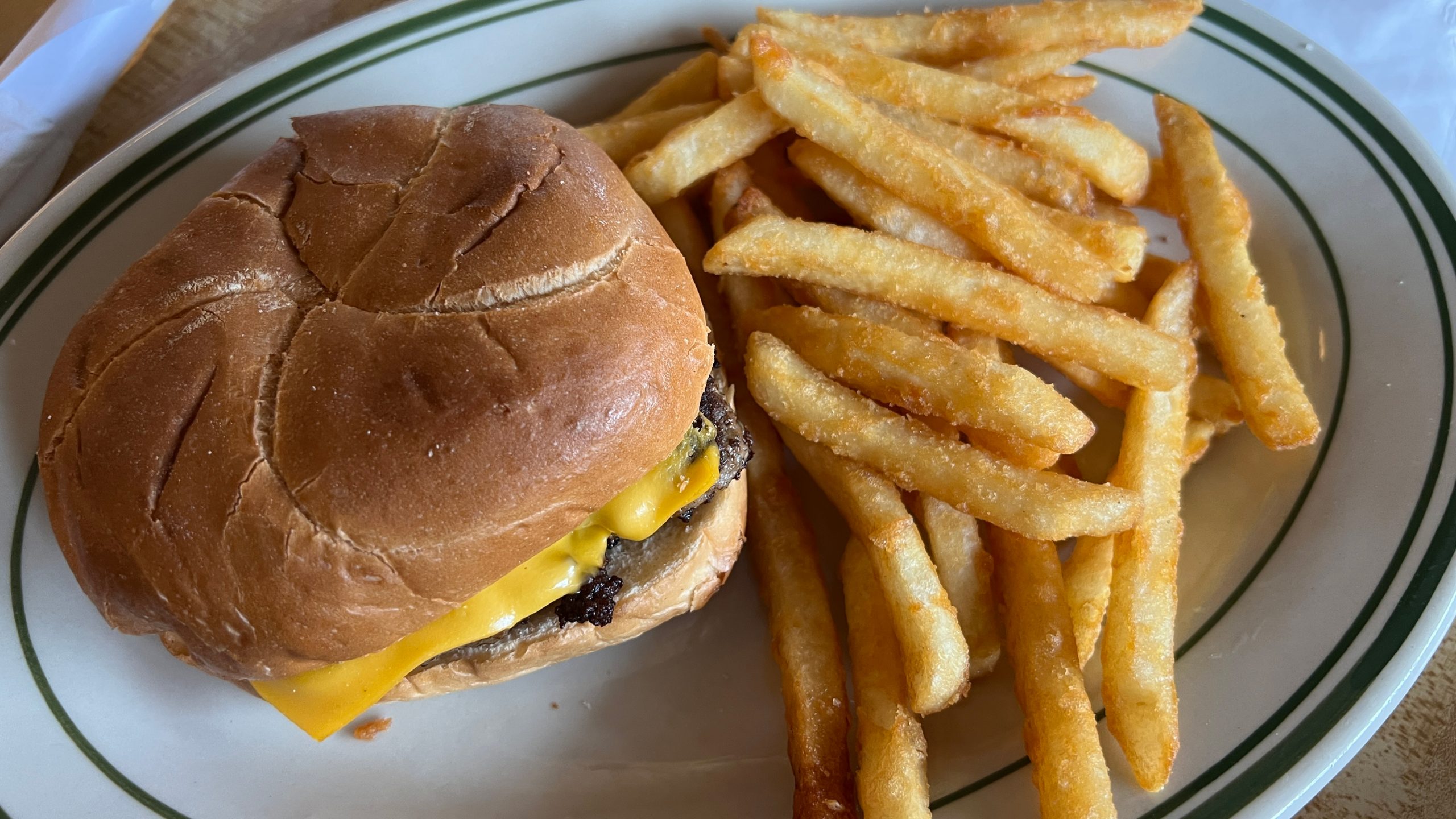
Some nights, dinner was provided by tour organisers. On other nights guests were obliged to visit local restaurants, bars and eateries at their own expense.
On our trip, both tour guides were trained rescue professionals equipped with locator beacons, marine radios, and phones to raise an alarm in an emergency.
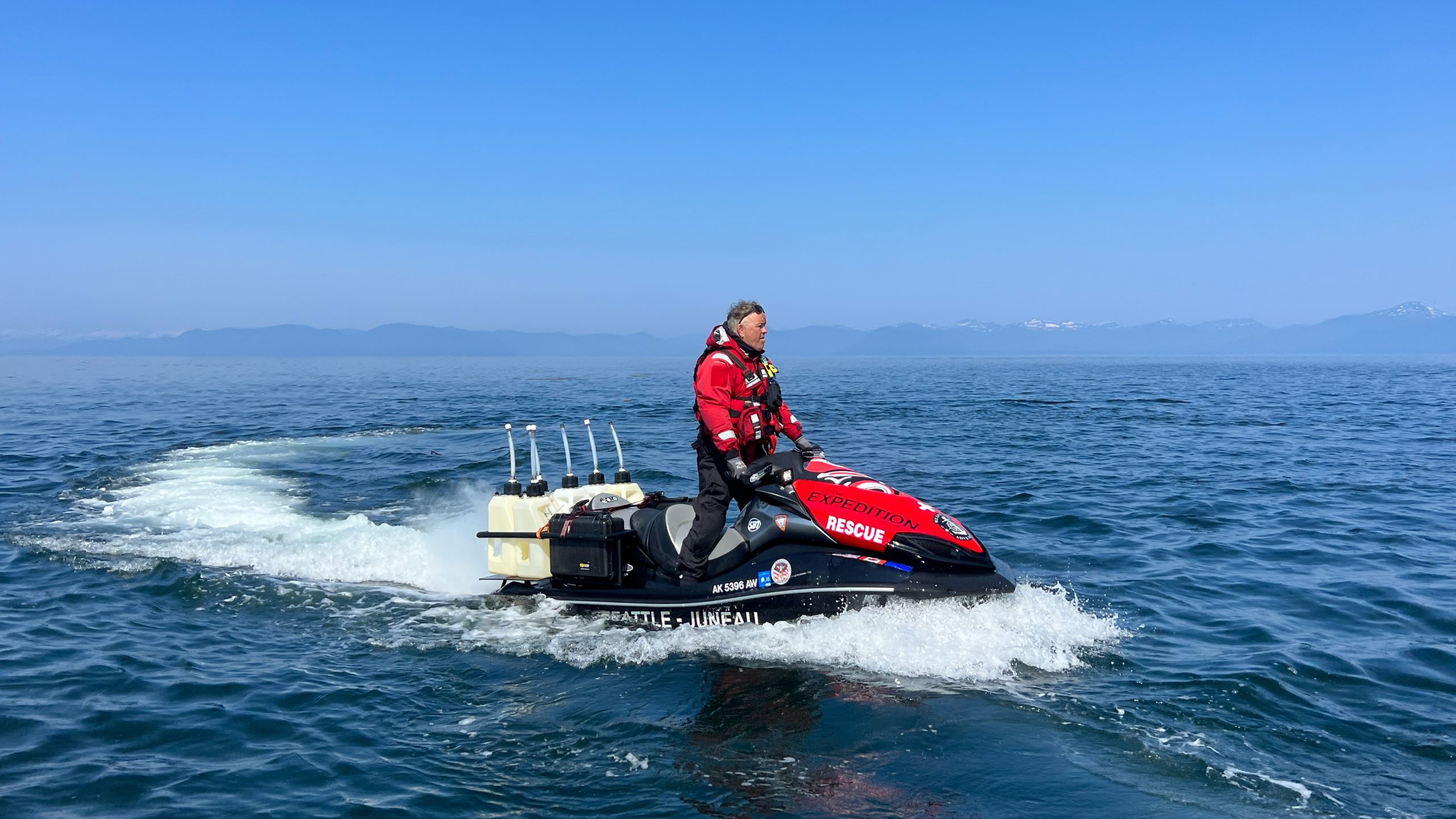

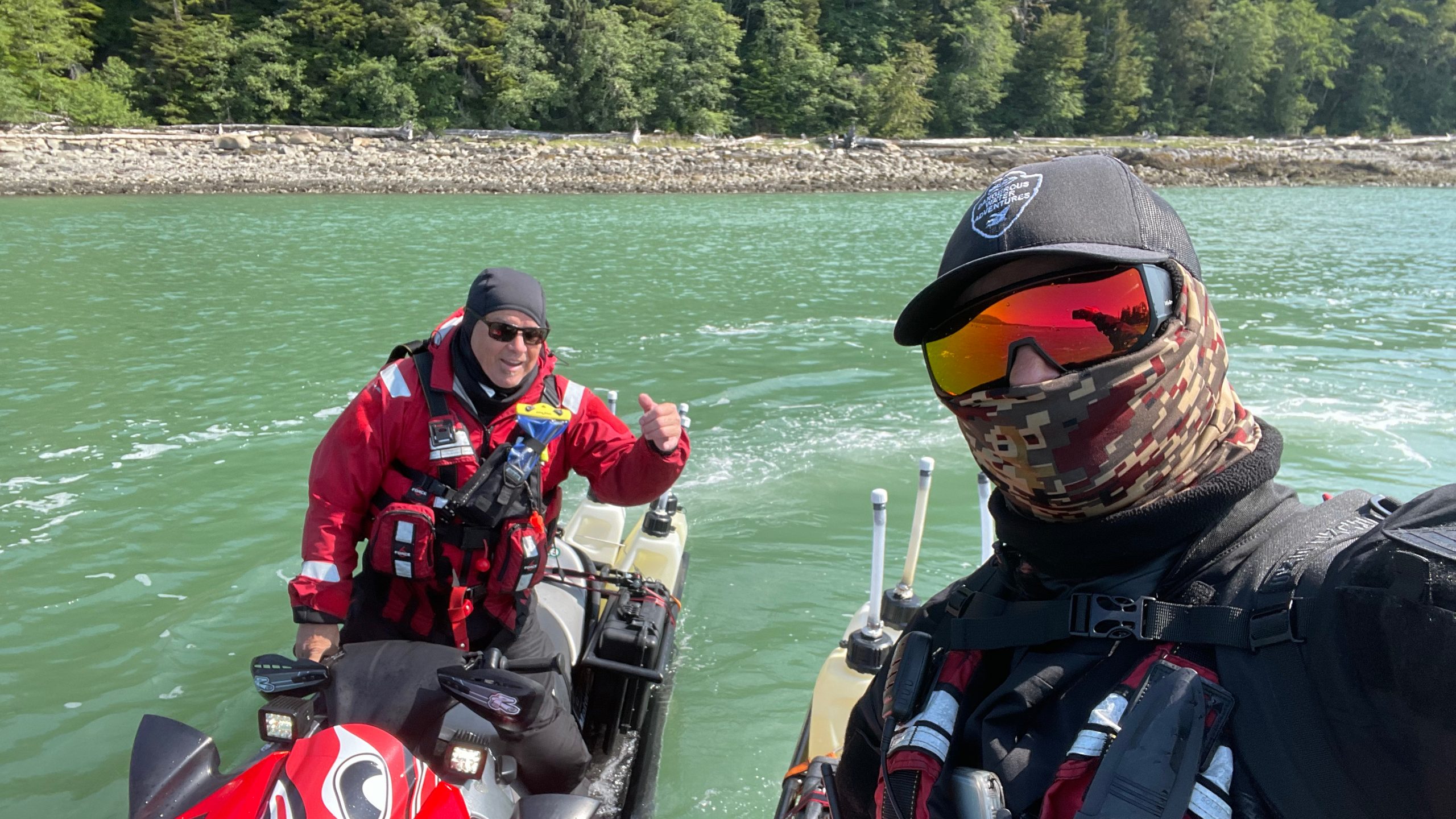
Mobile phone coverage was patchy in most places we travelled – including on the islands – even using US cellphone carriers.
This particular group of experienced ocean riders from Australia – who all knew each other from previous Jet Ski treks – were off the water by lunchtime most days.
However, most tours with novice Jet Ski riders take the better part of eight hours to complete.
Our journey was an extended version of the Alaskan Loop.
Below are day-by-day screenshots of a satellite tracking app, including distances and how much time we spent on the water.
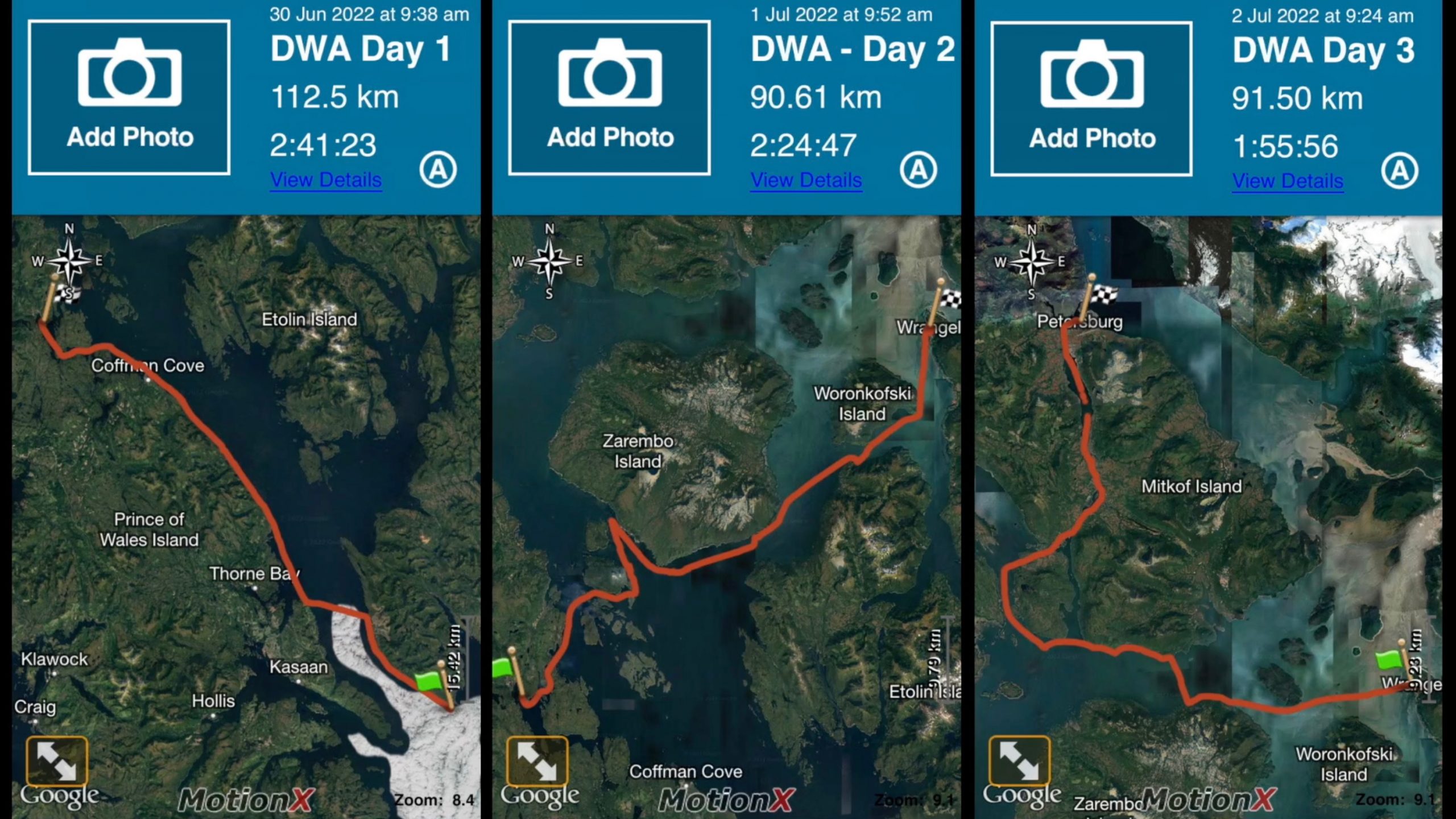
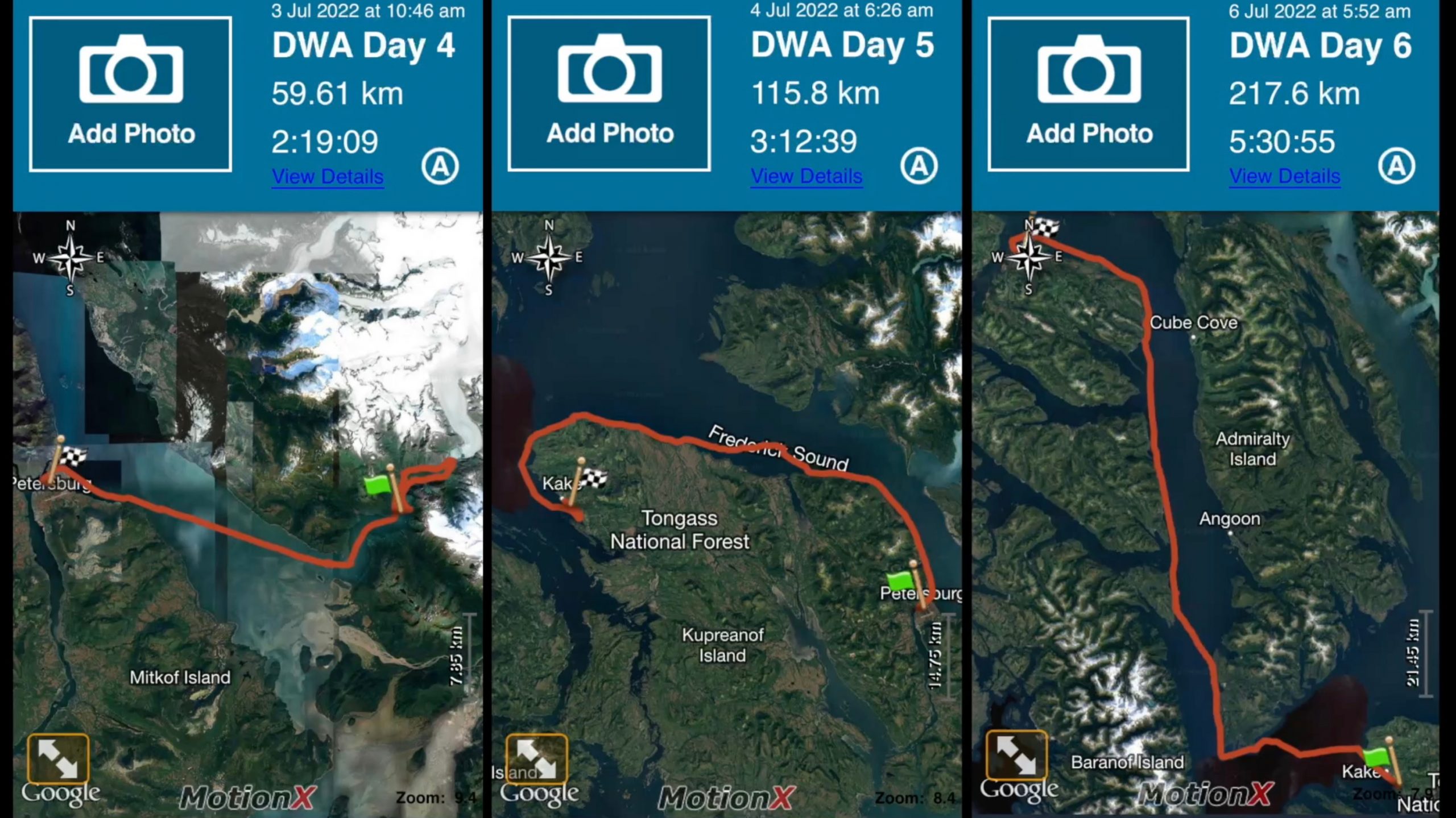
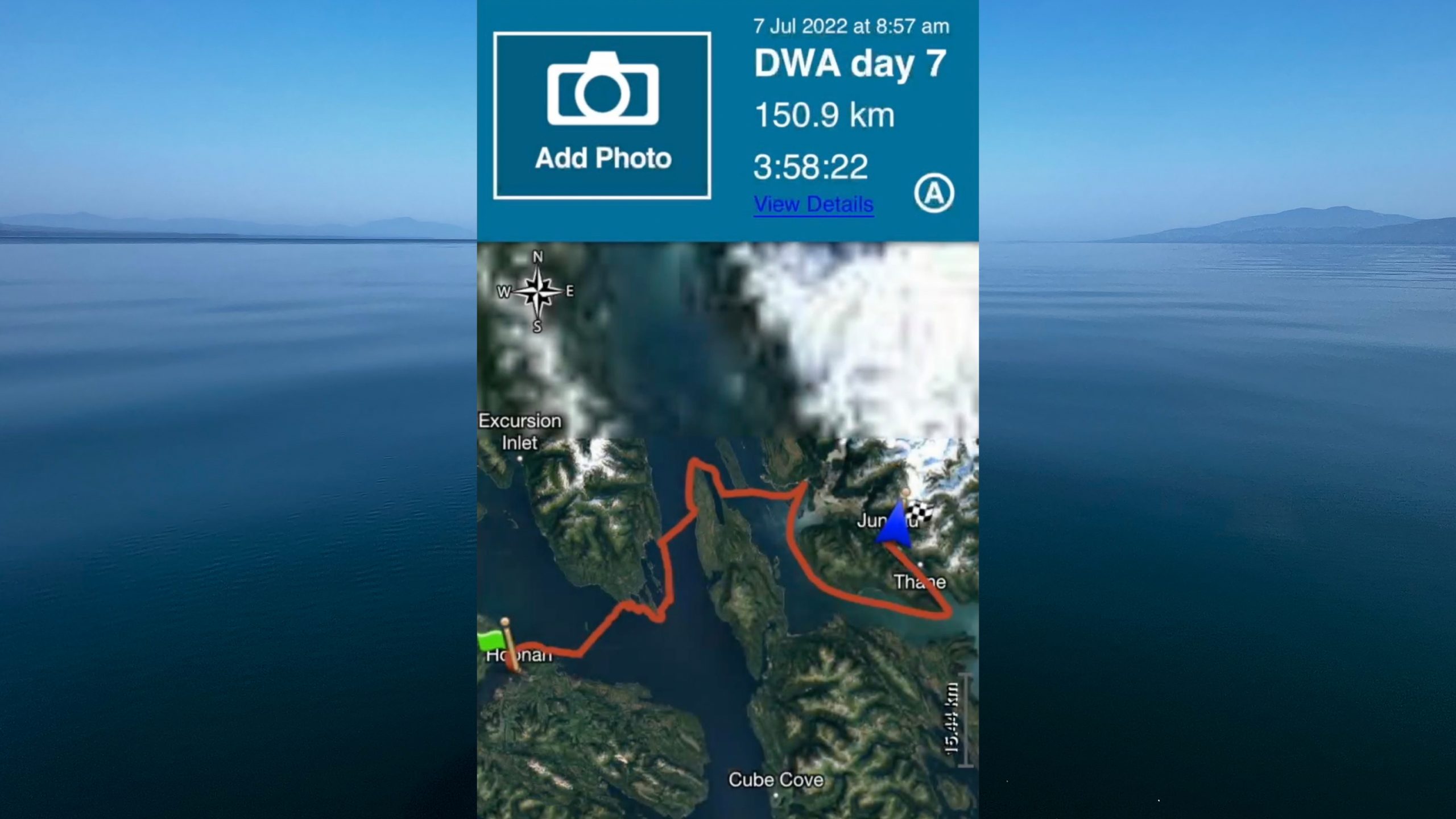
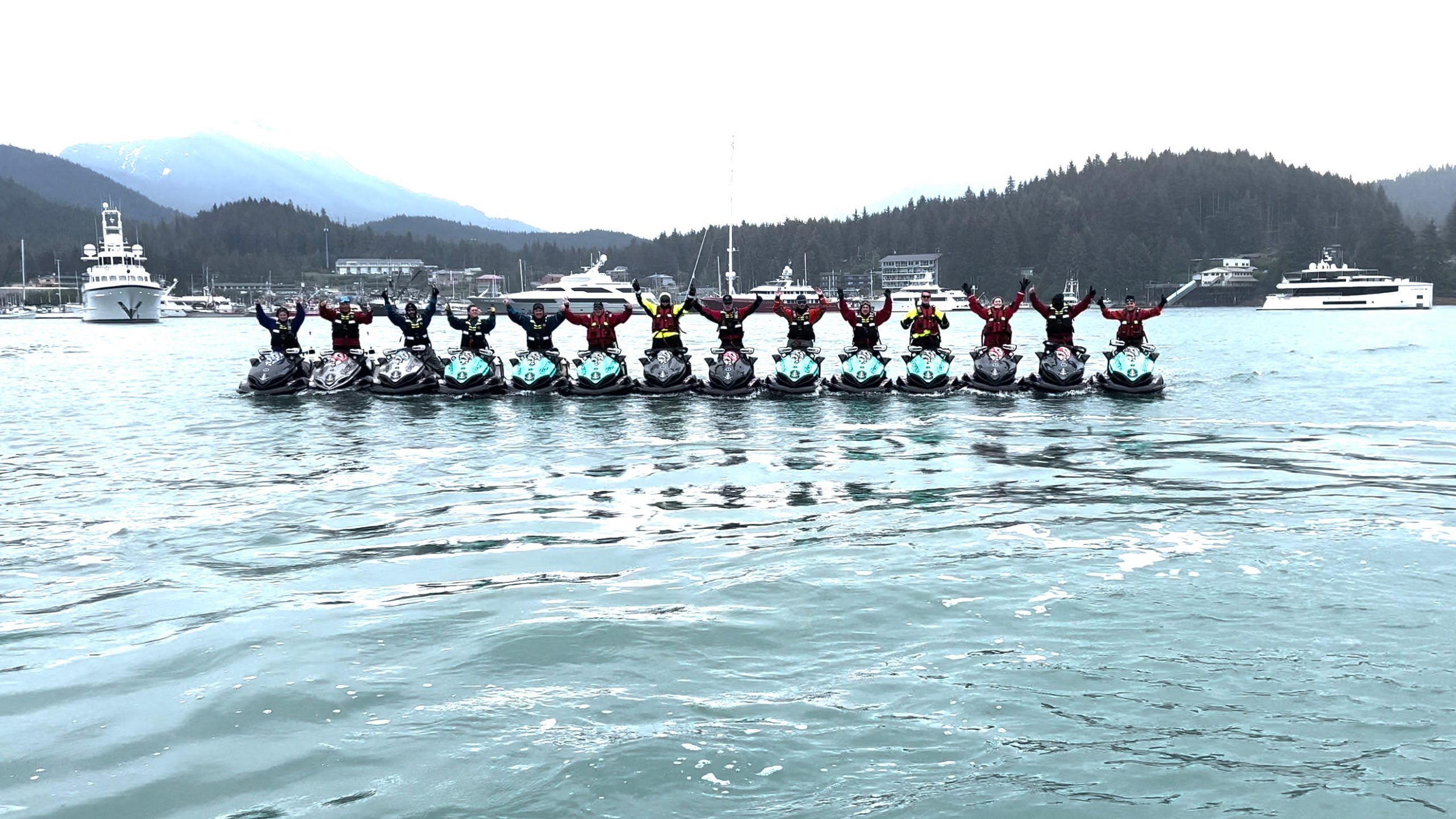
MORE: First solo Jet Ski ride around Australia
MORE: All our news coverage in one click
MORE: Follow us on Facebook
MORE: Follow us on YouTube
https://www.youtube.com/watch?v=2P8J6qtTOss



